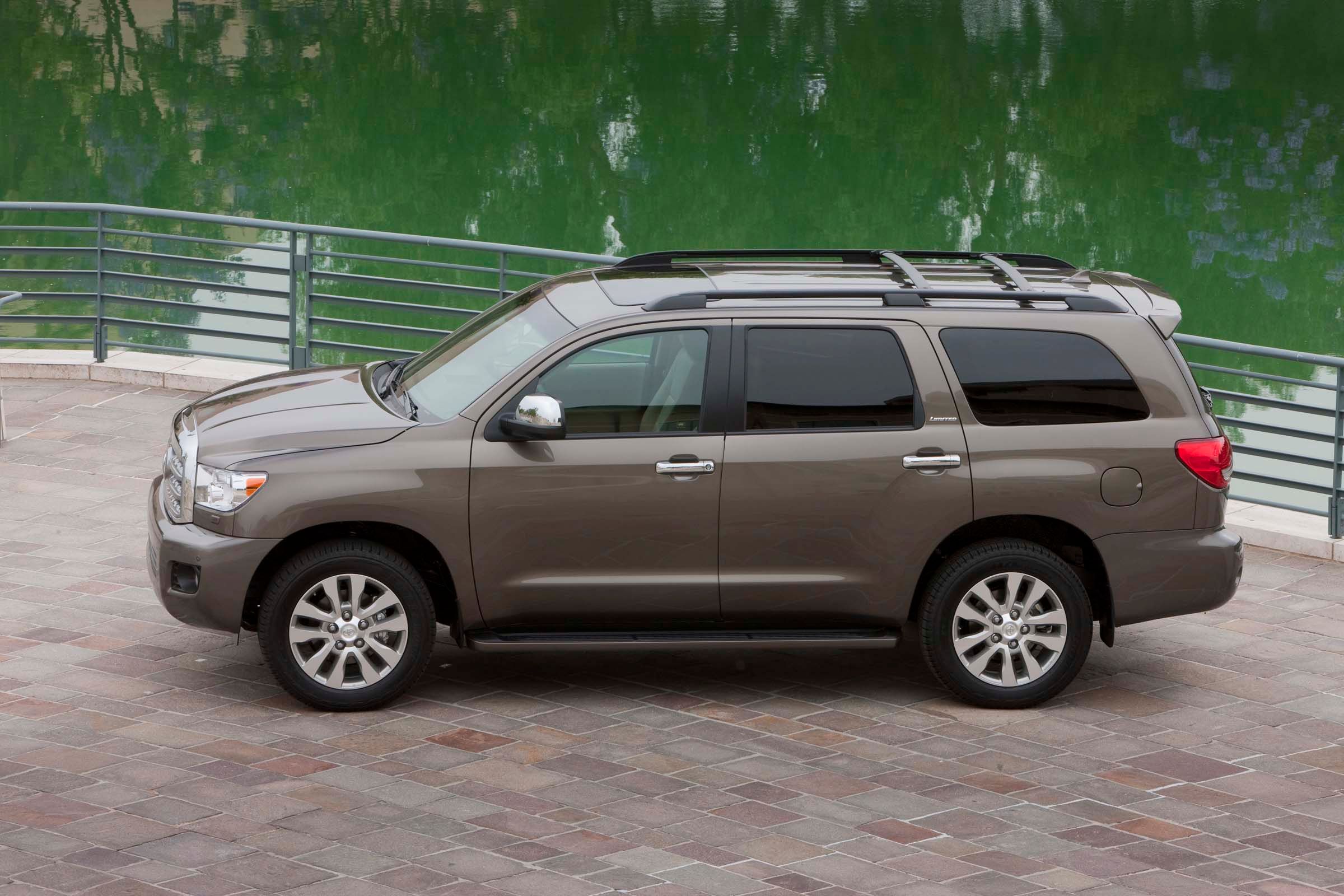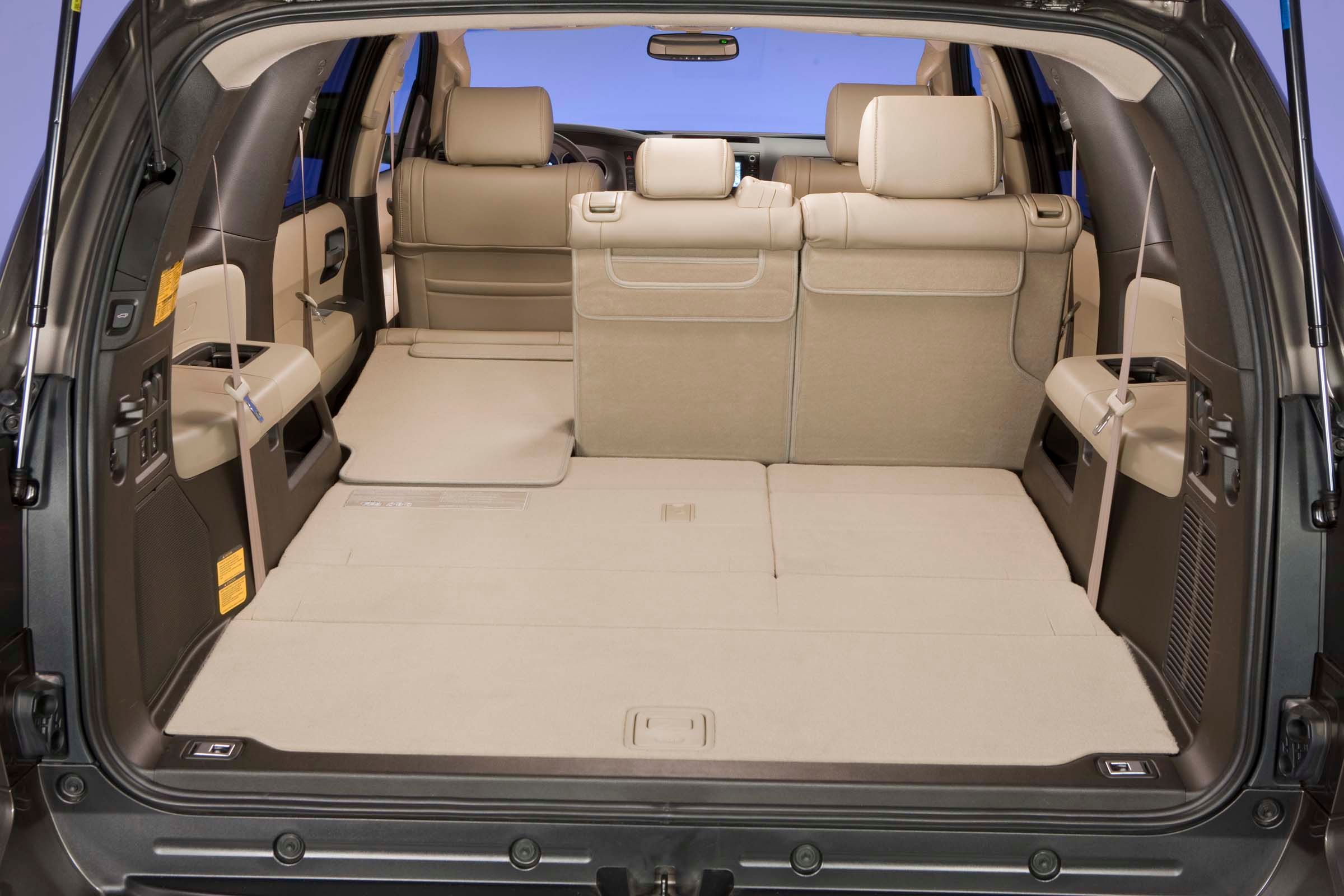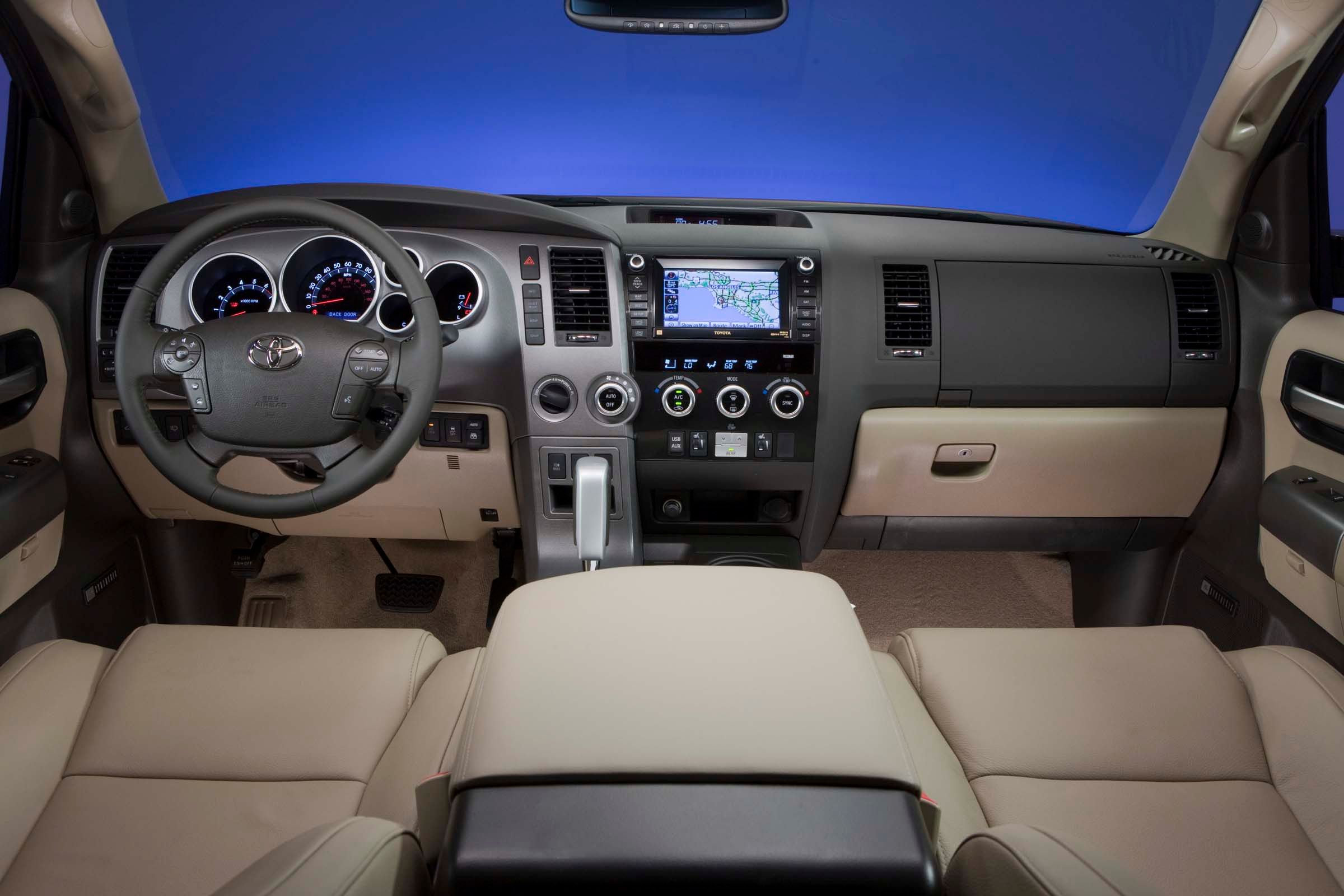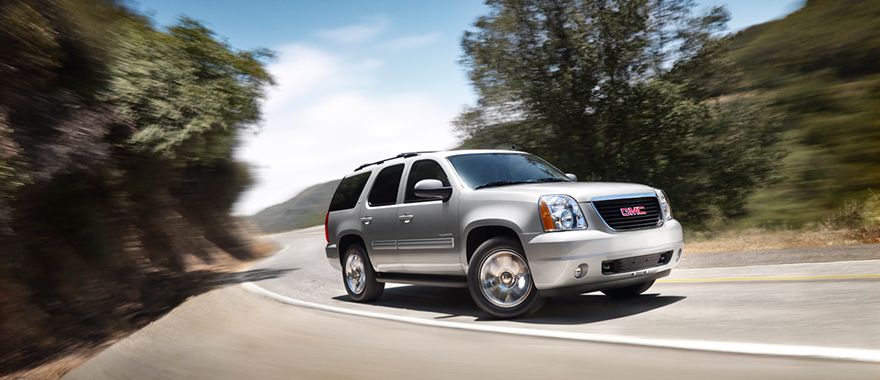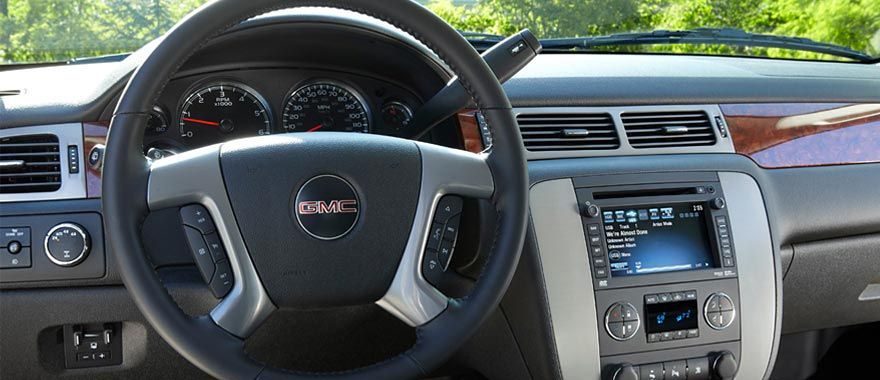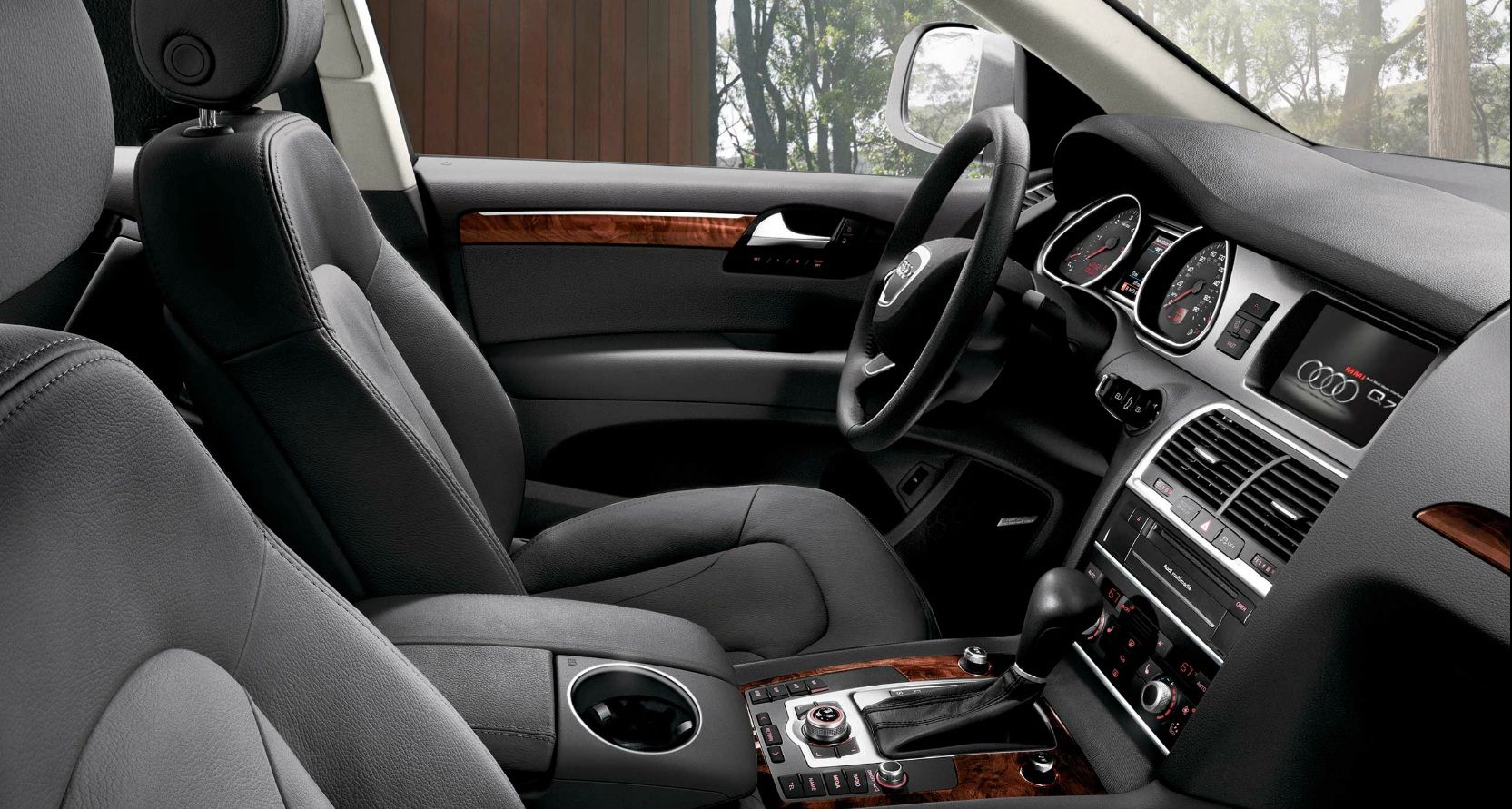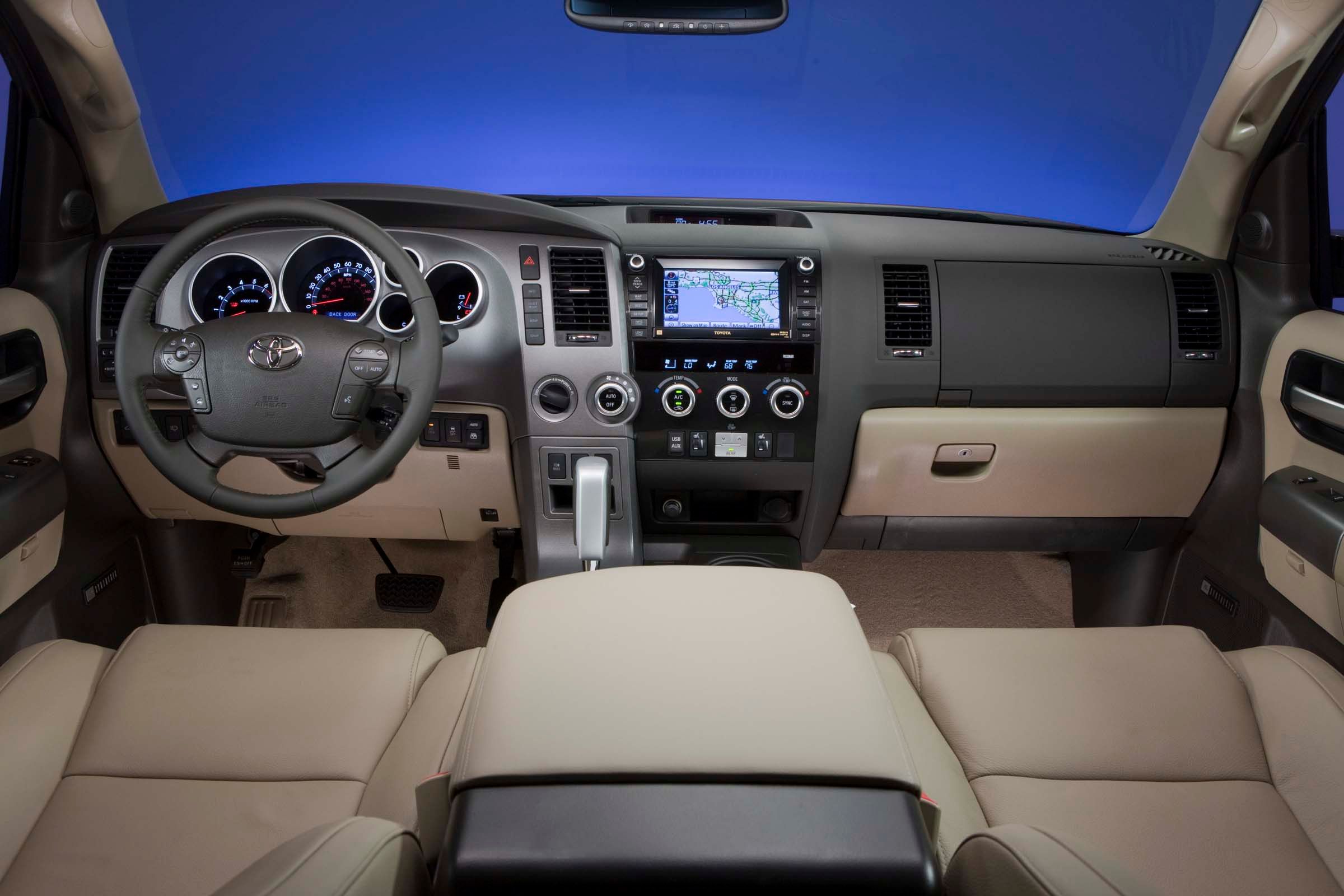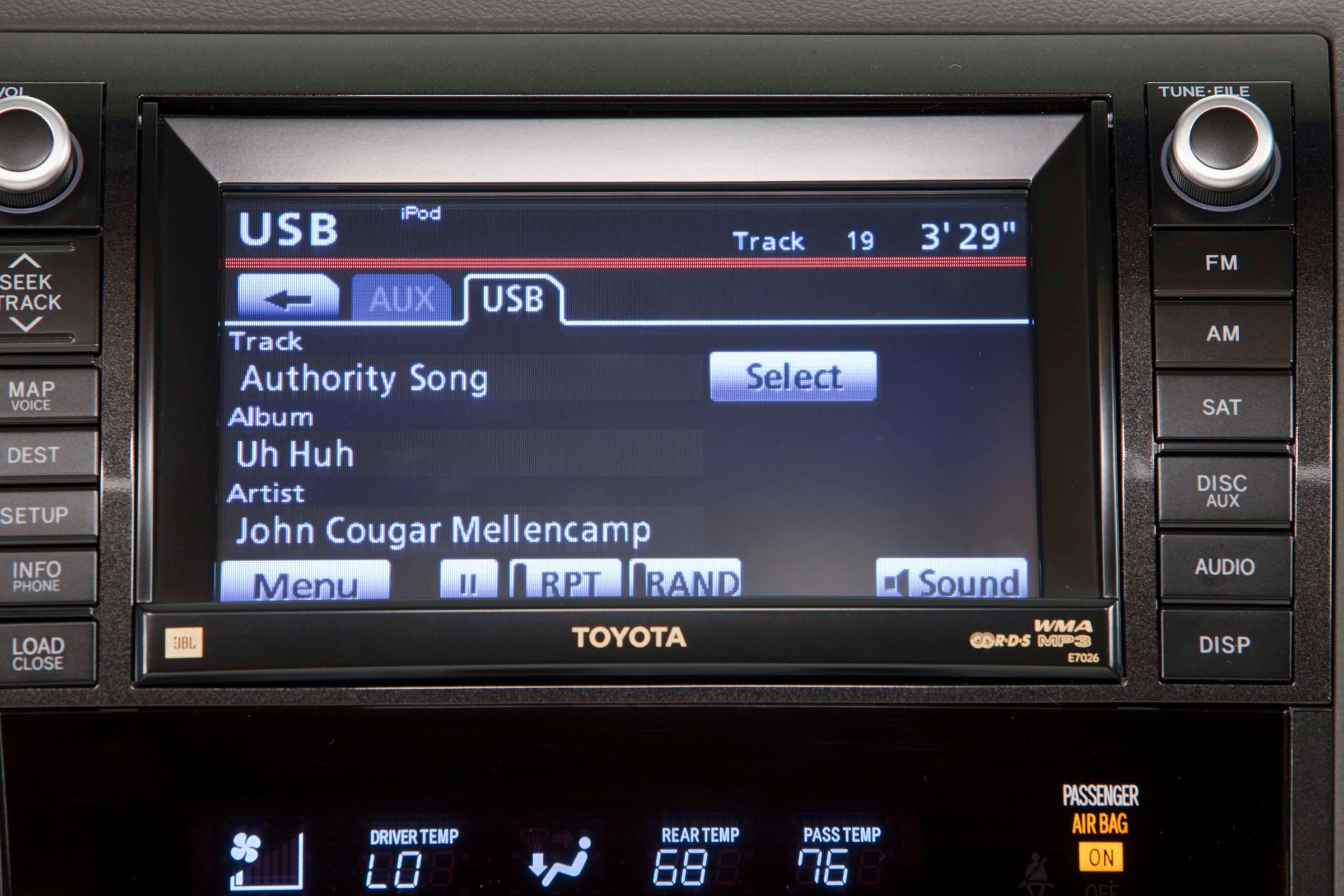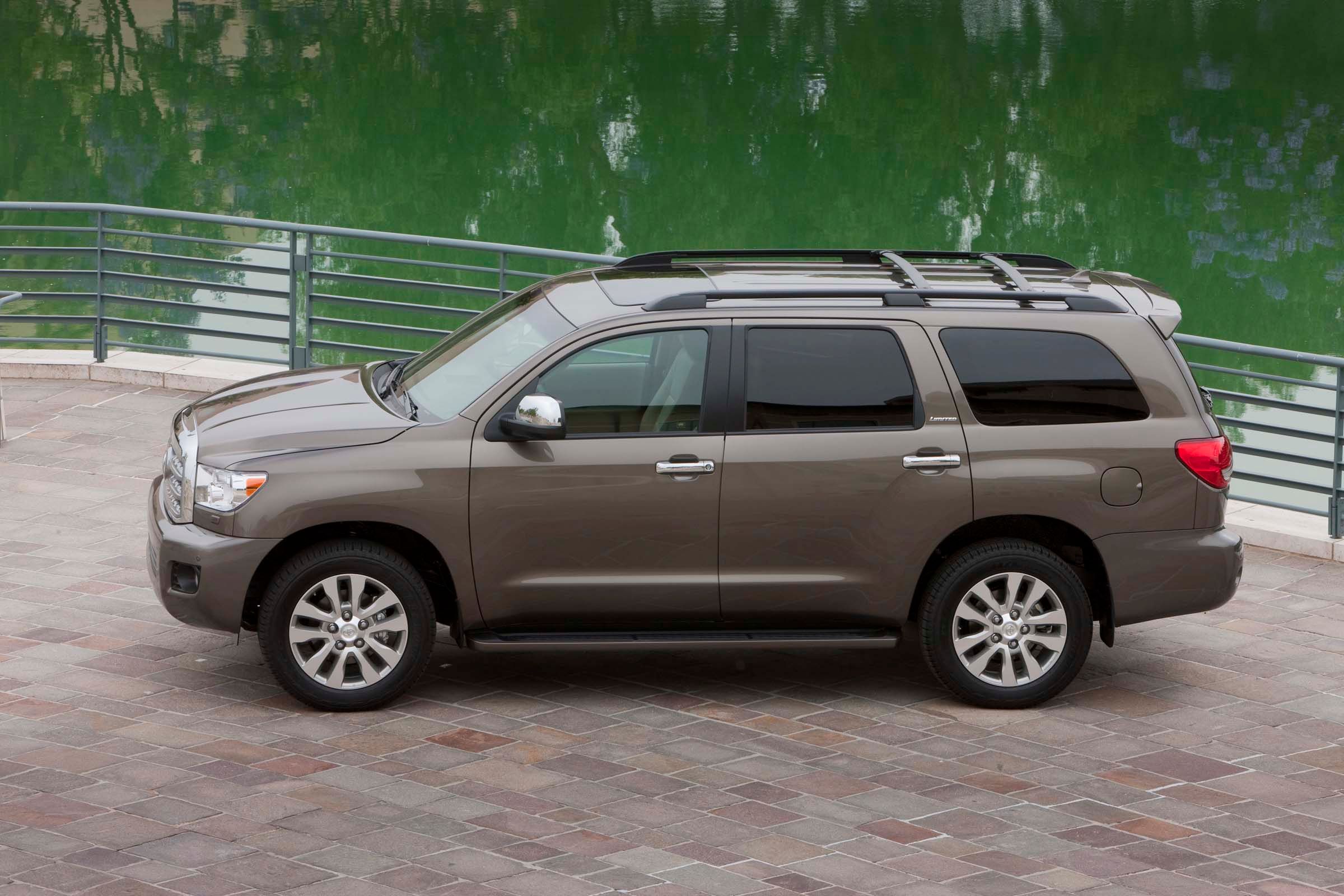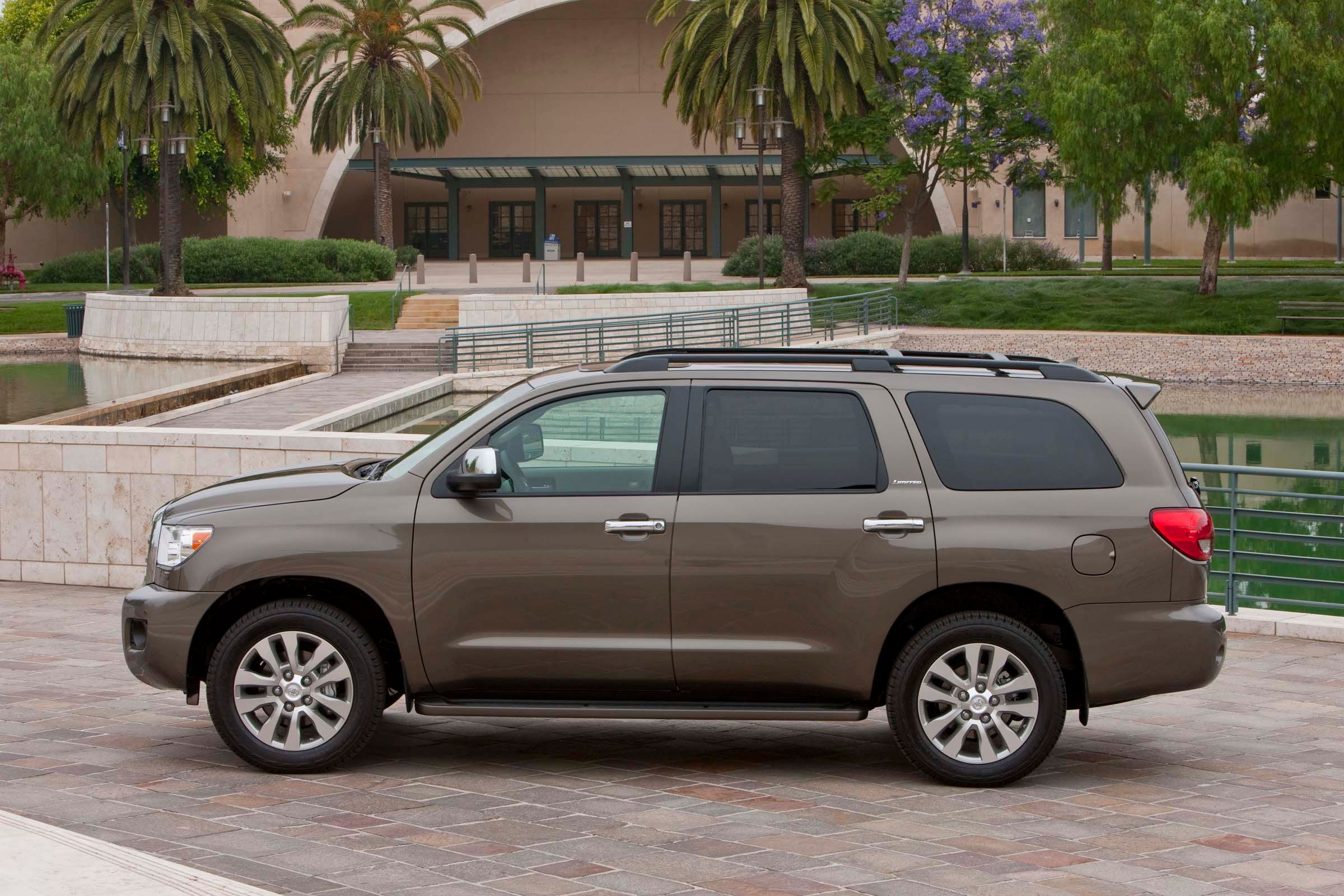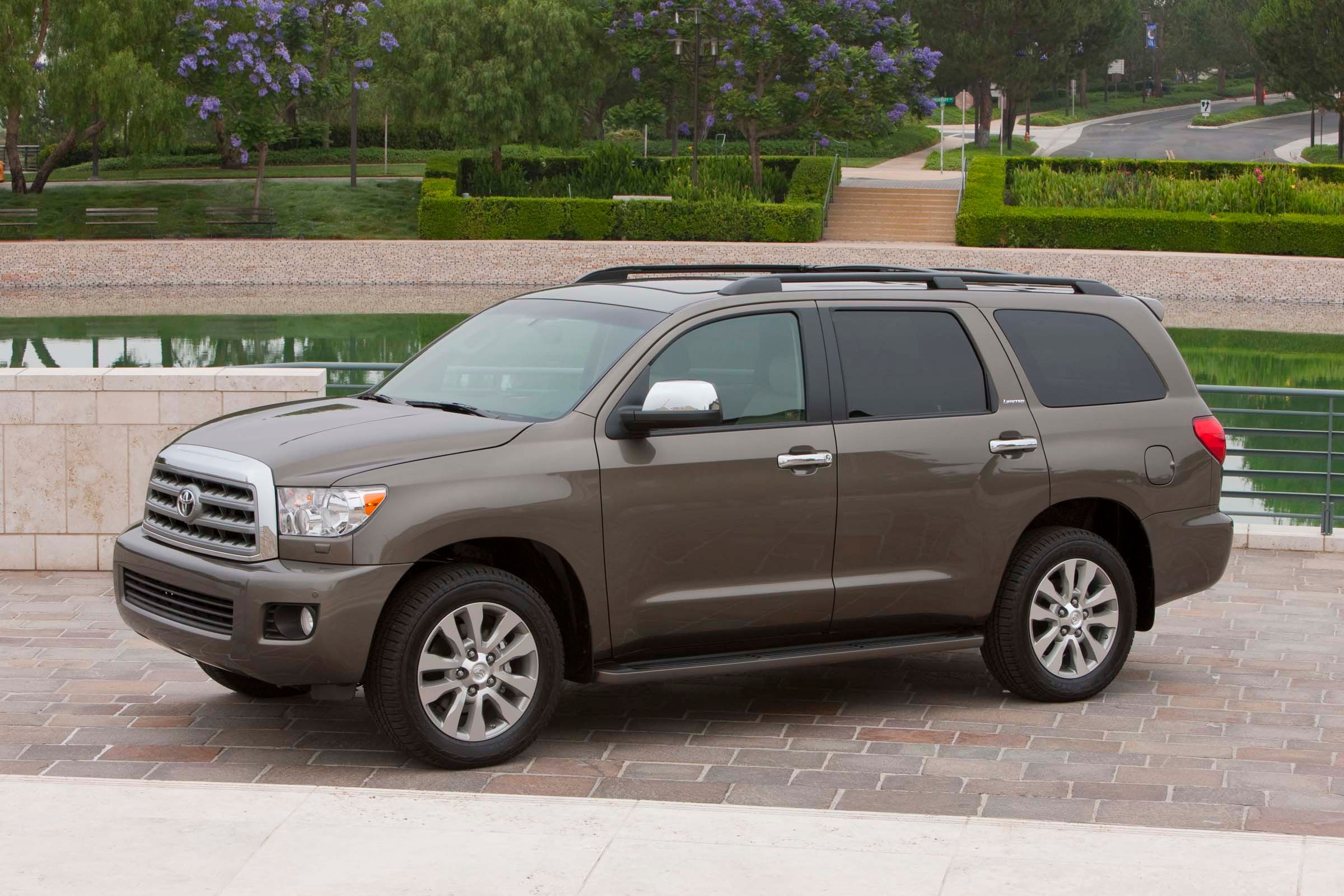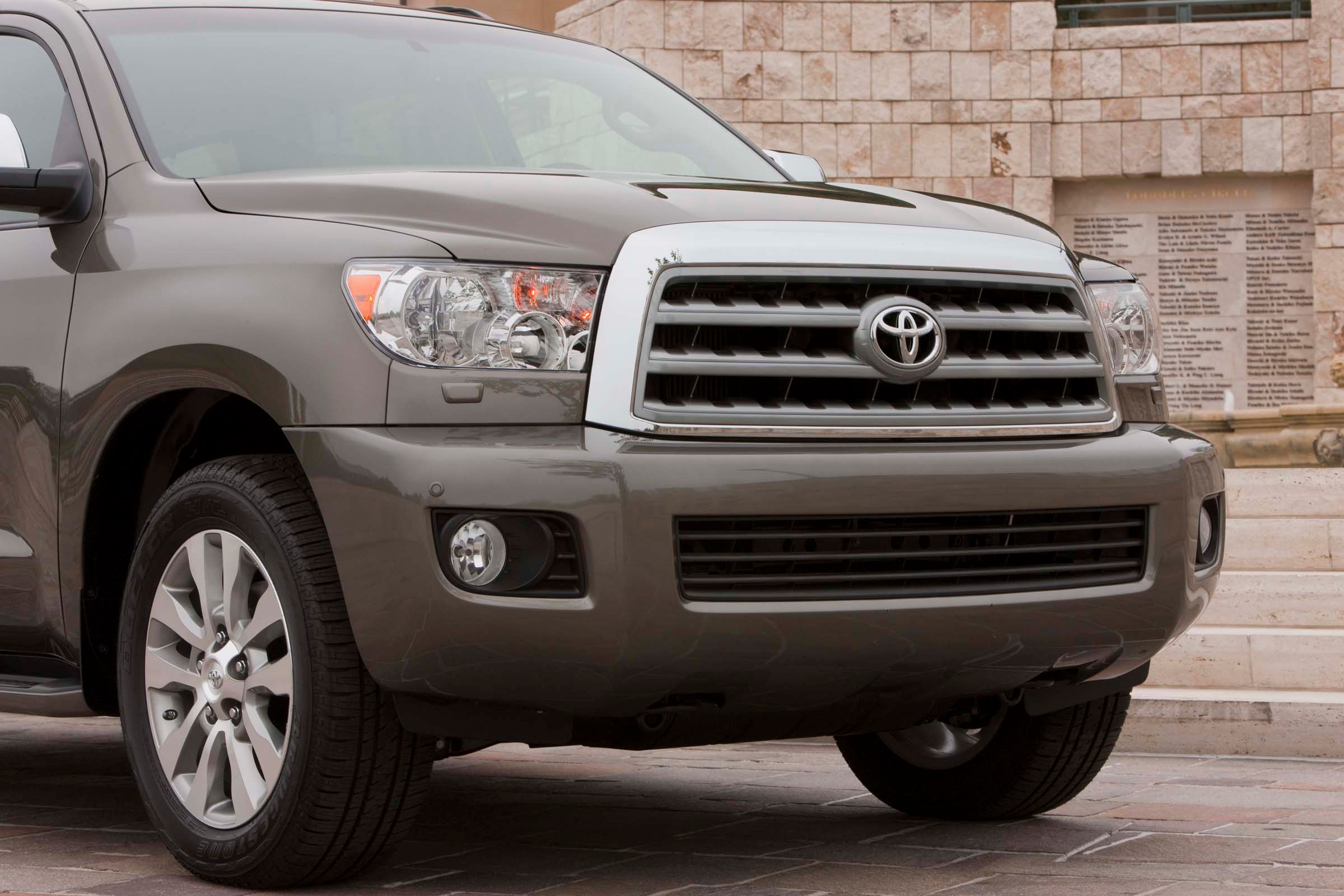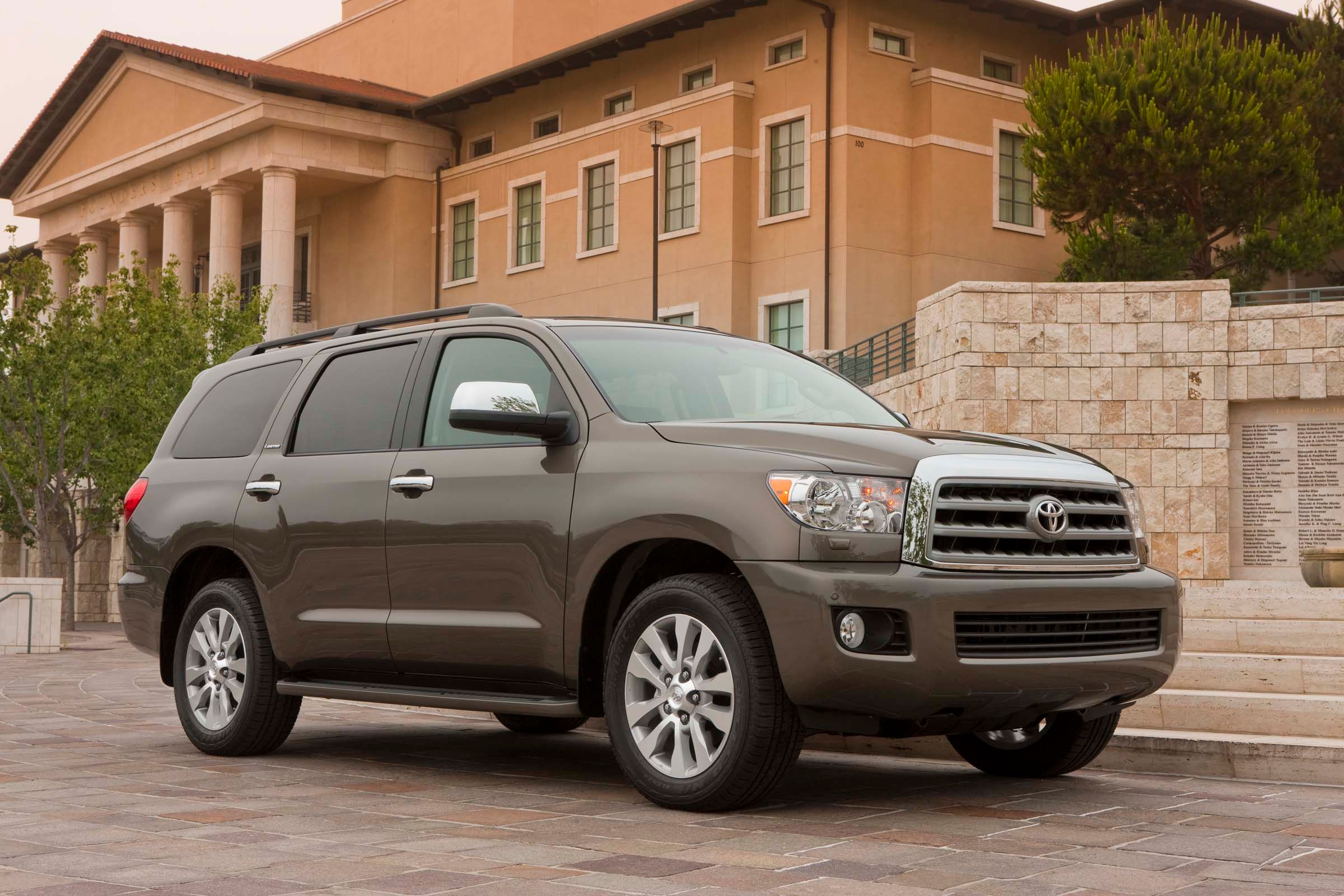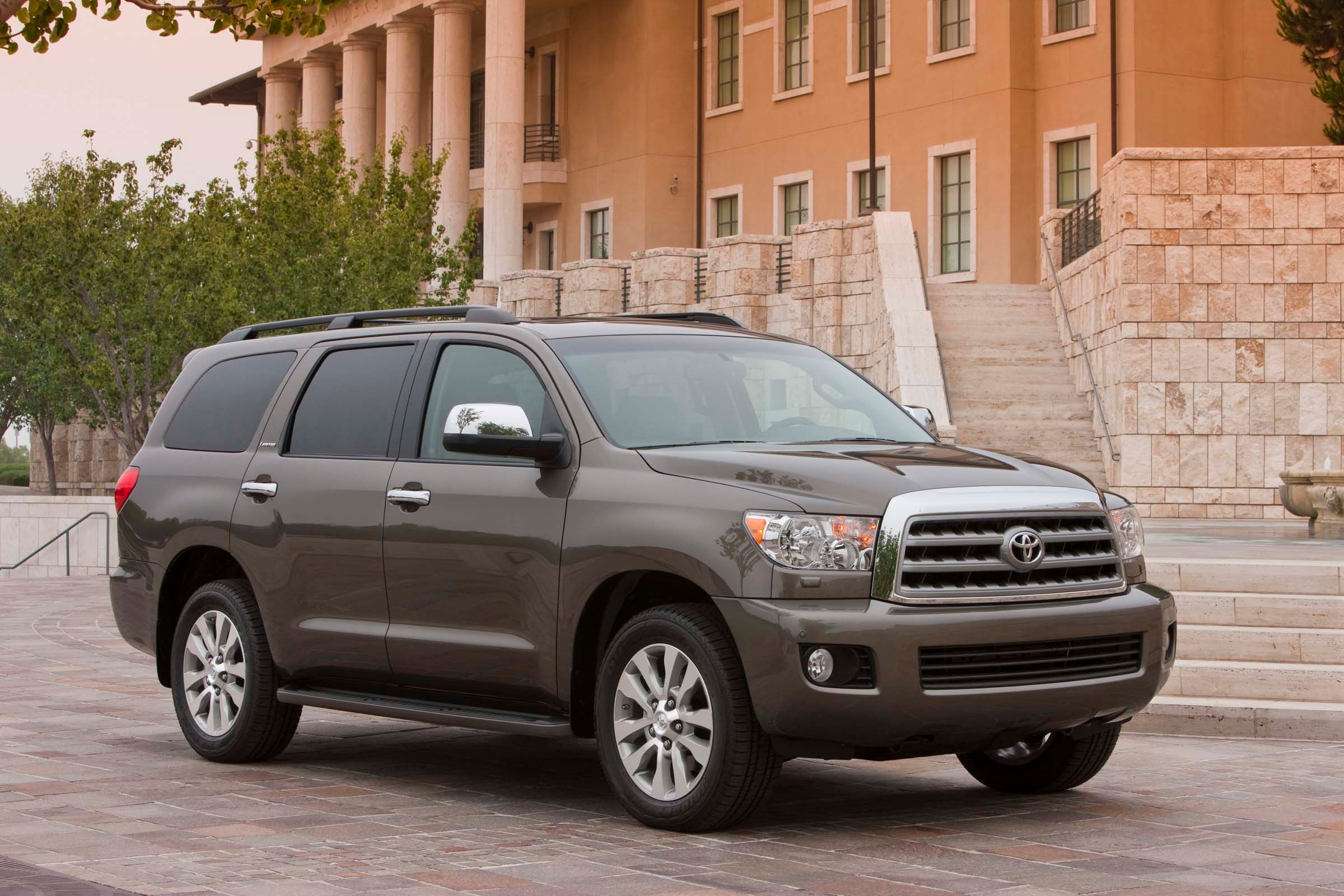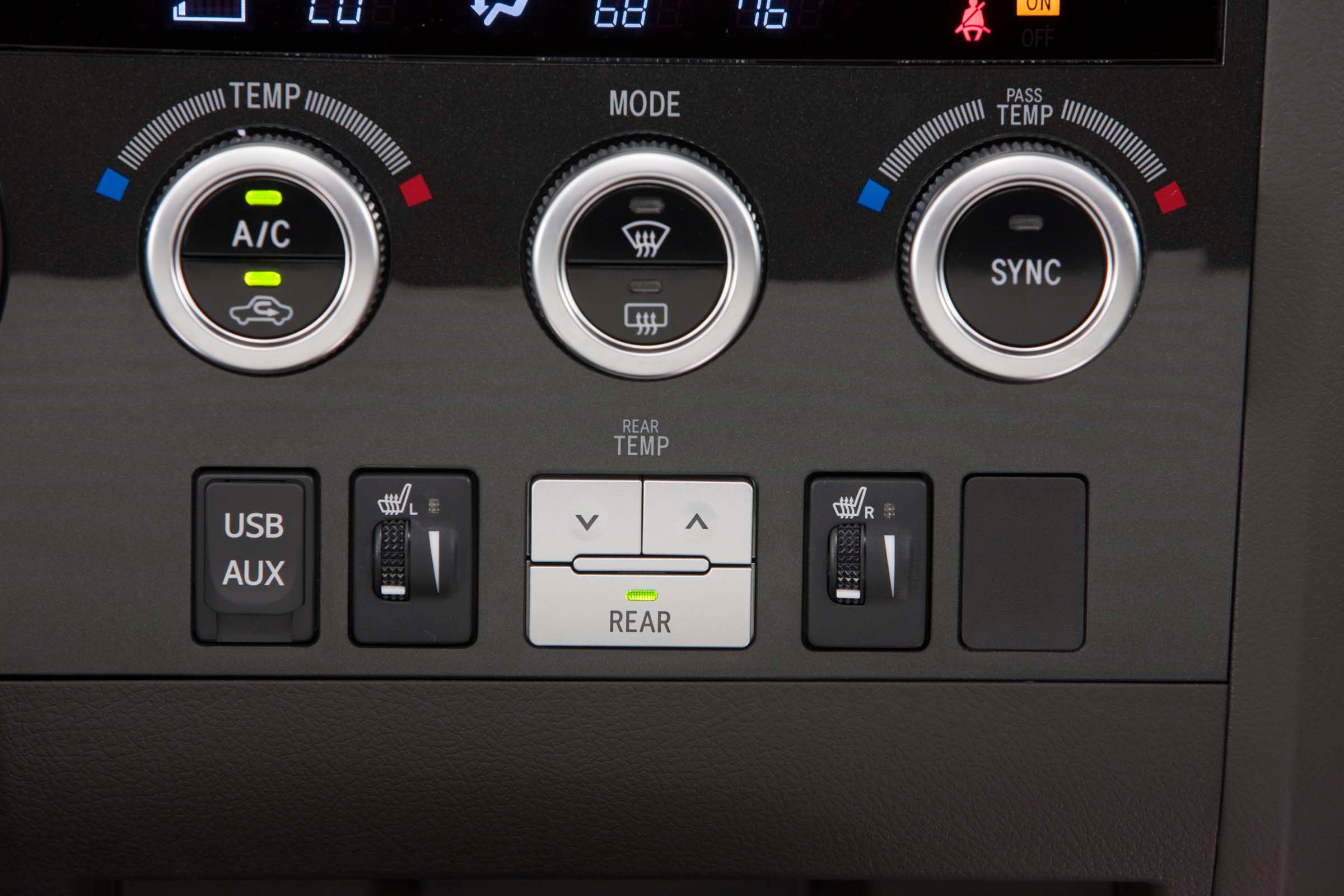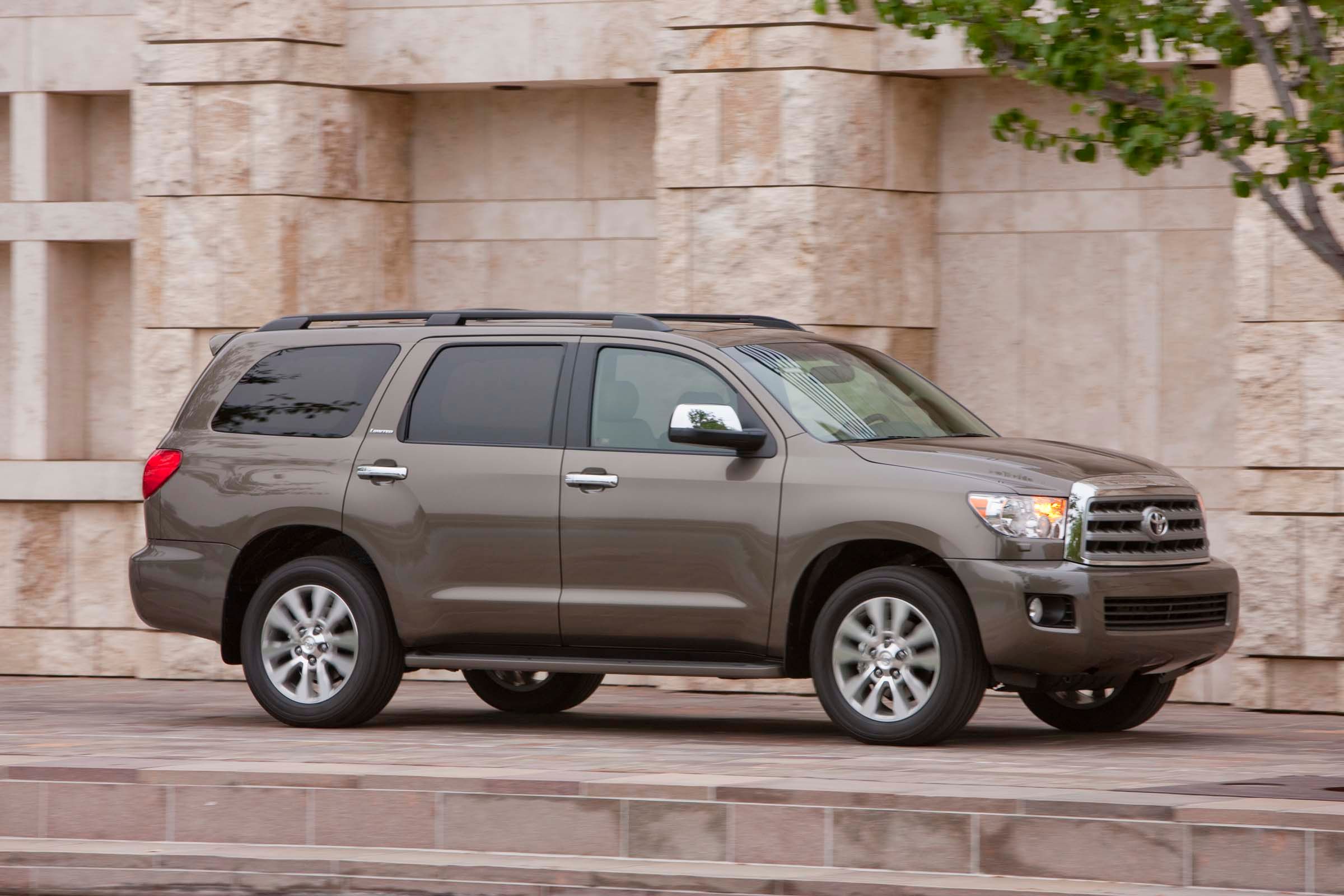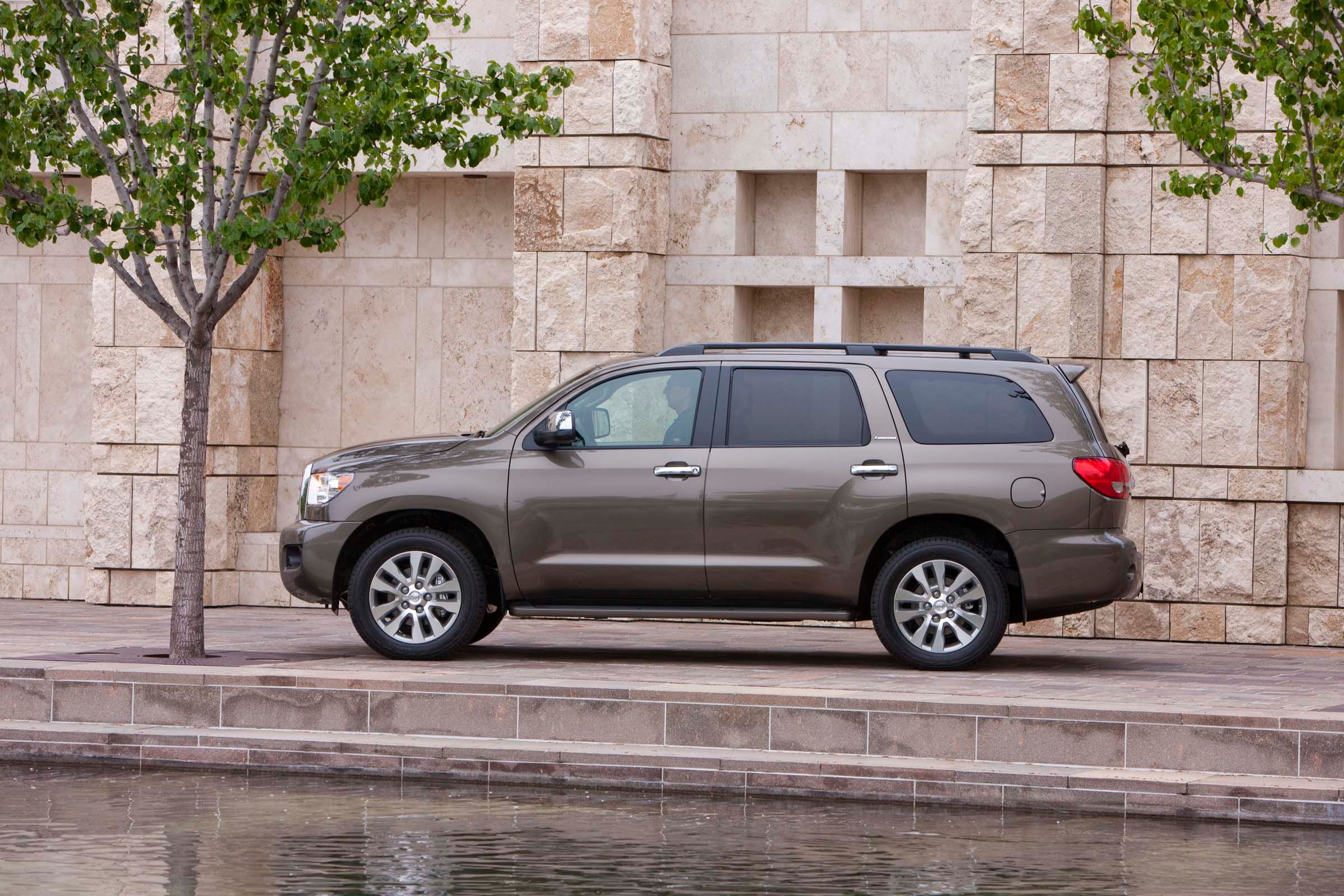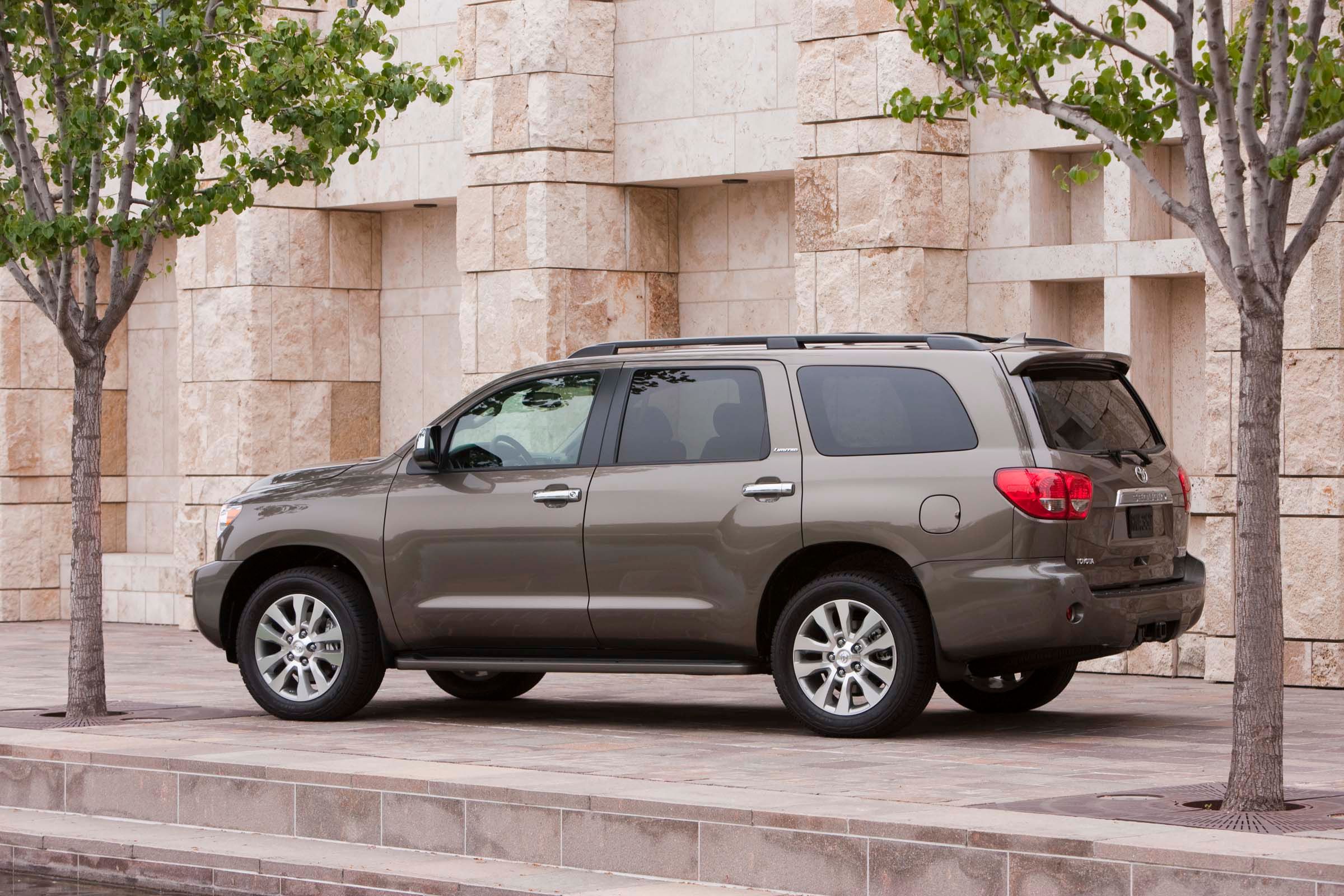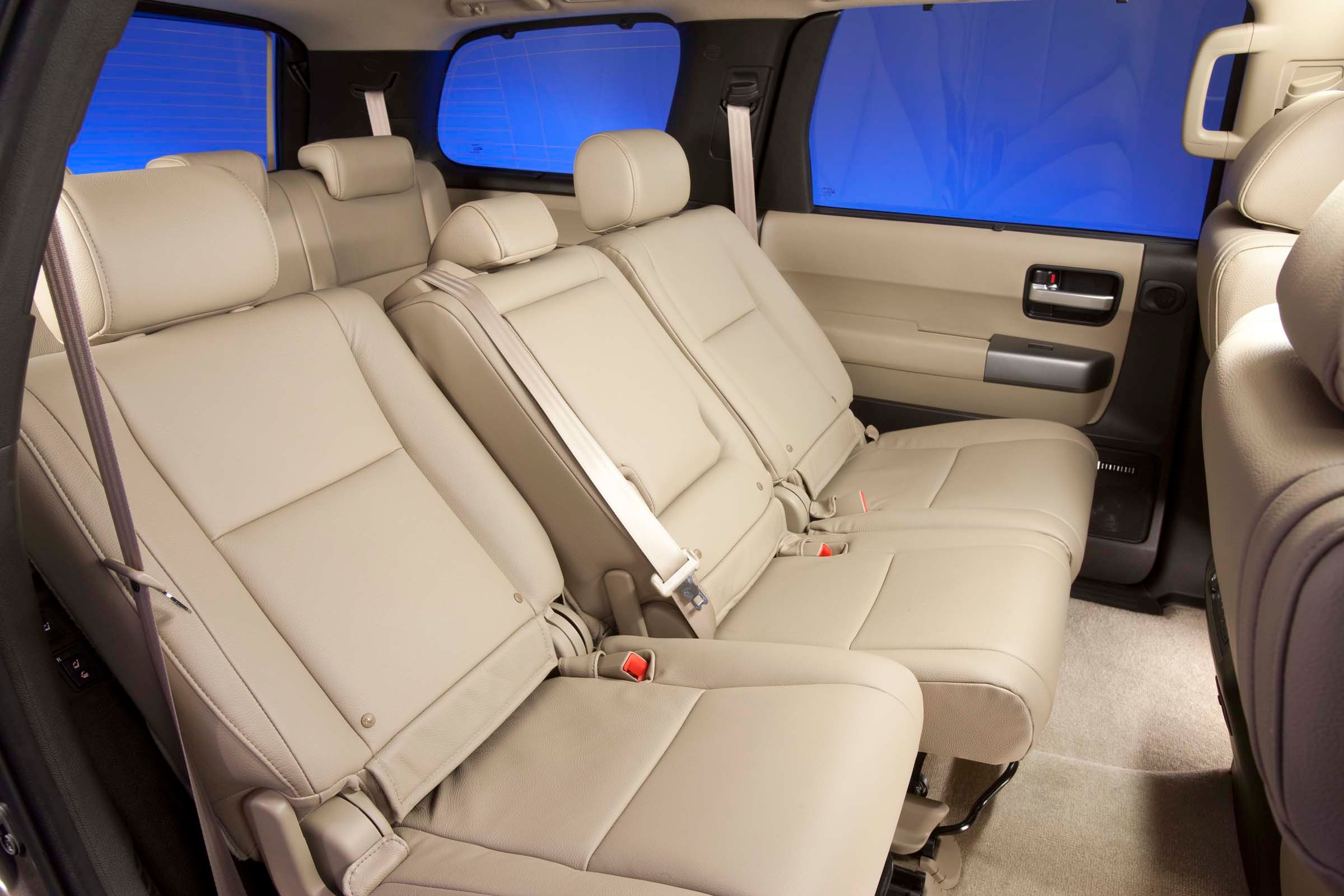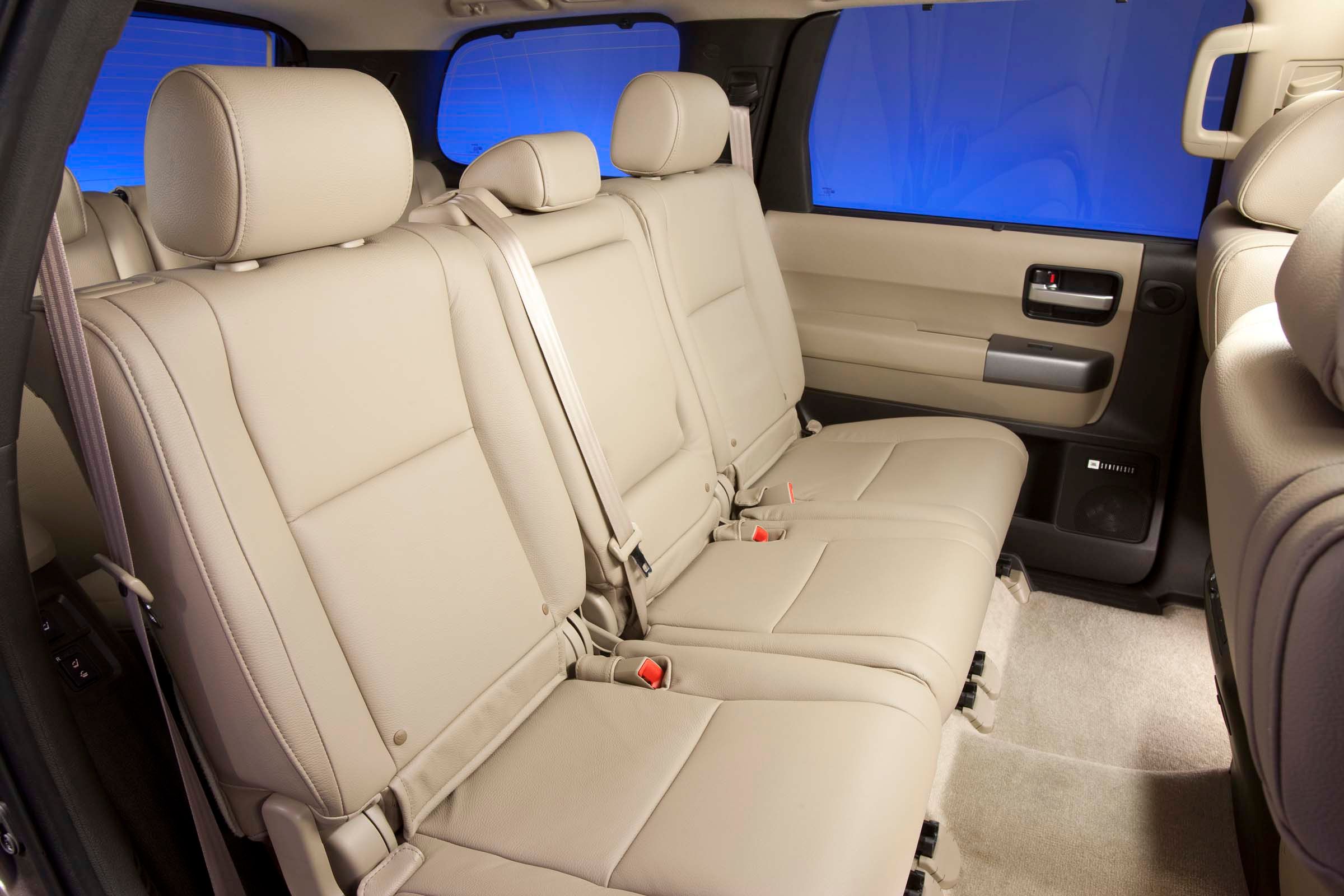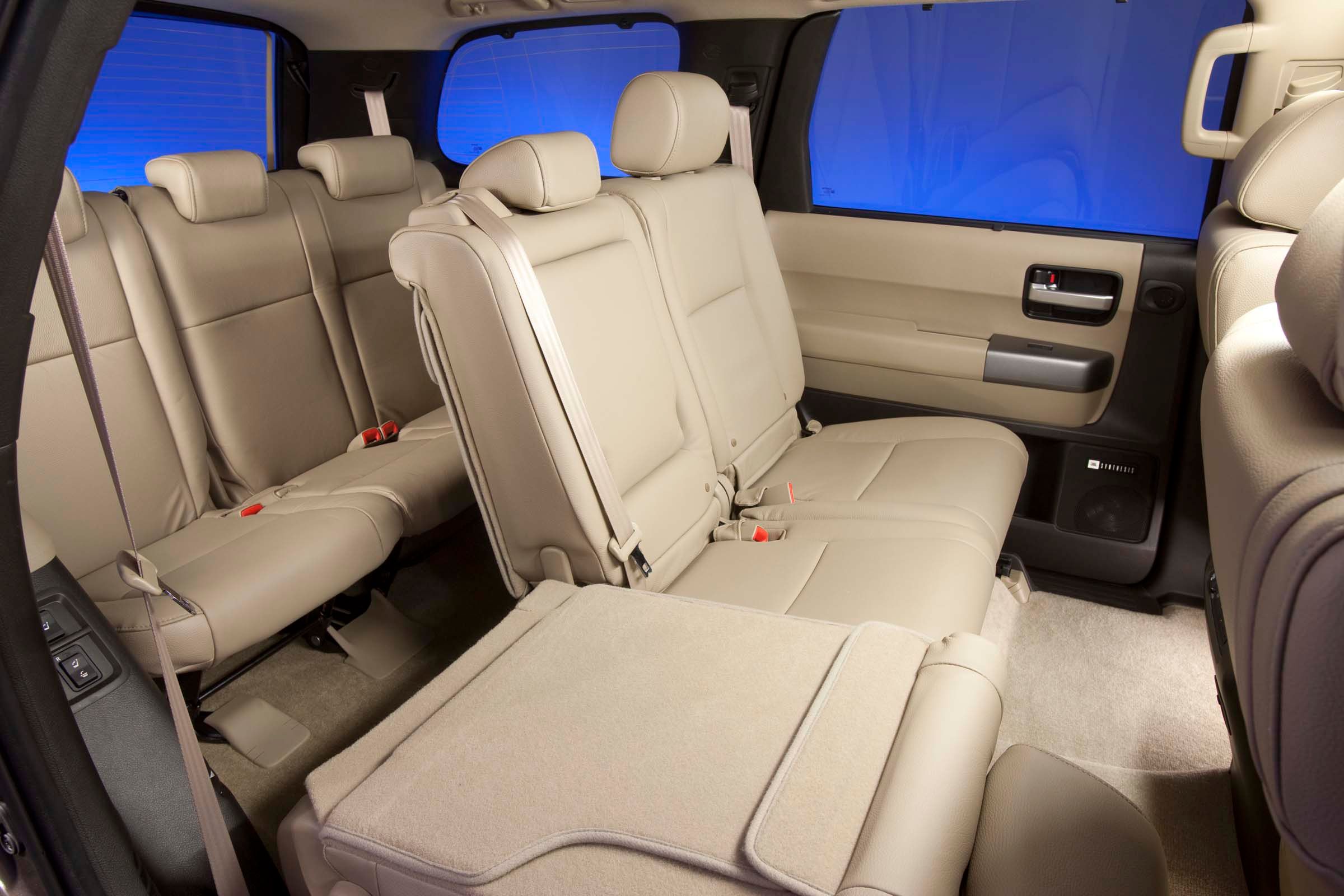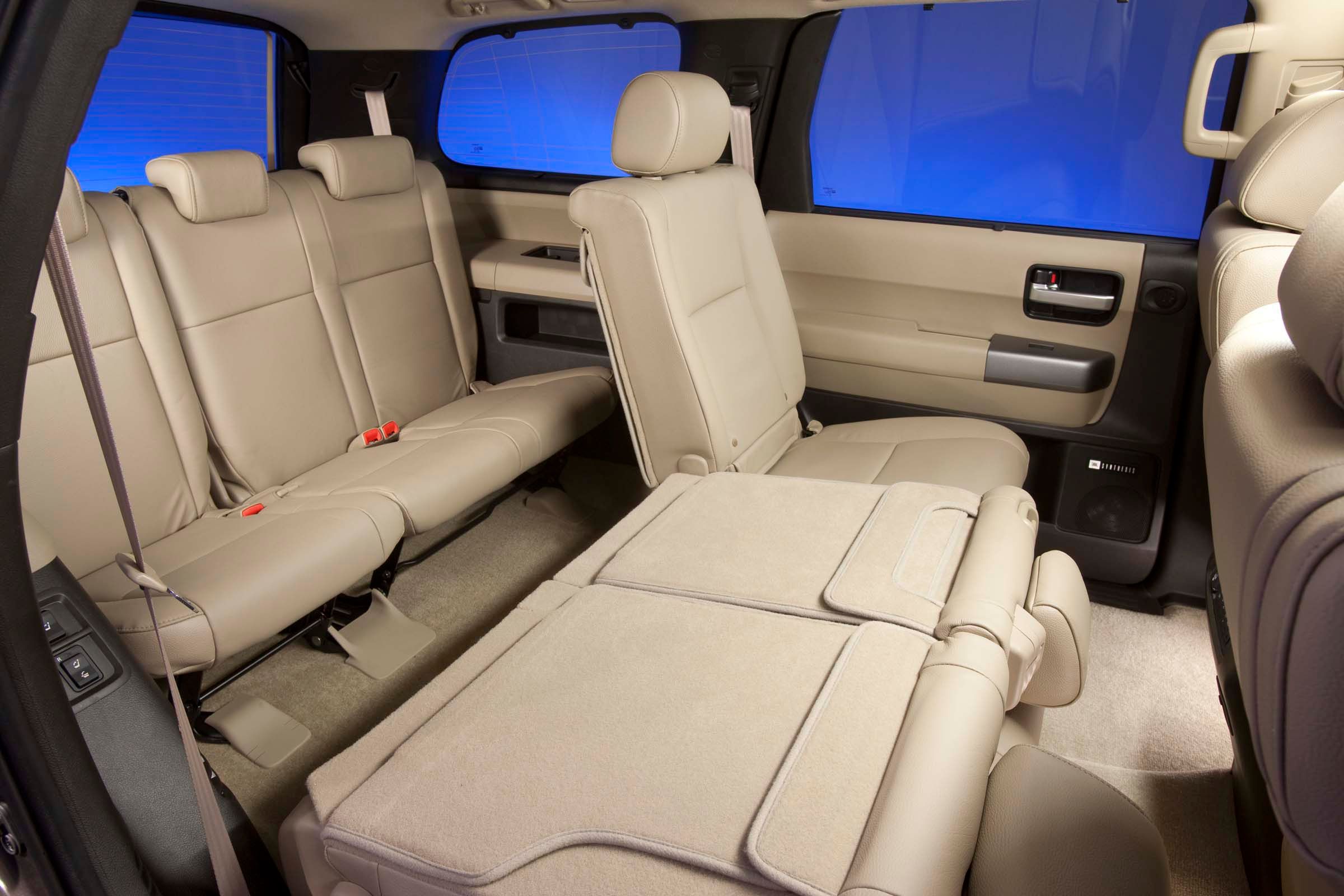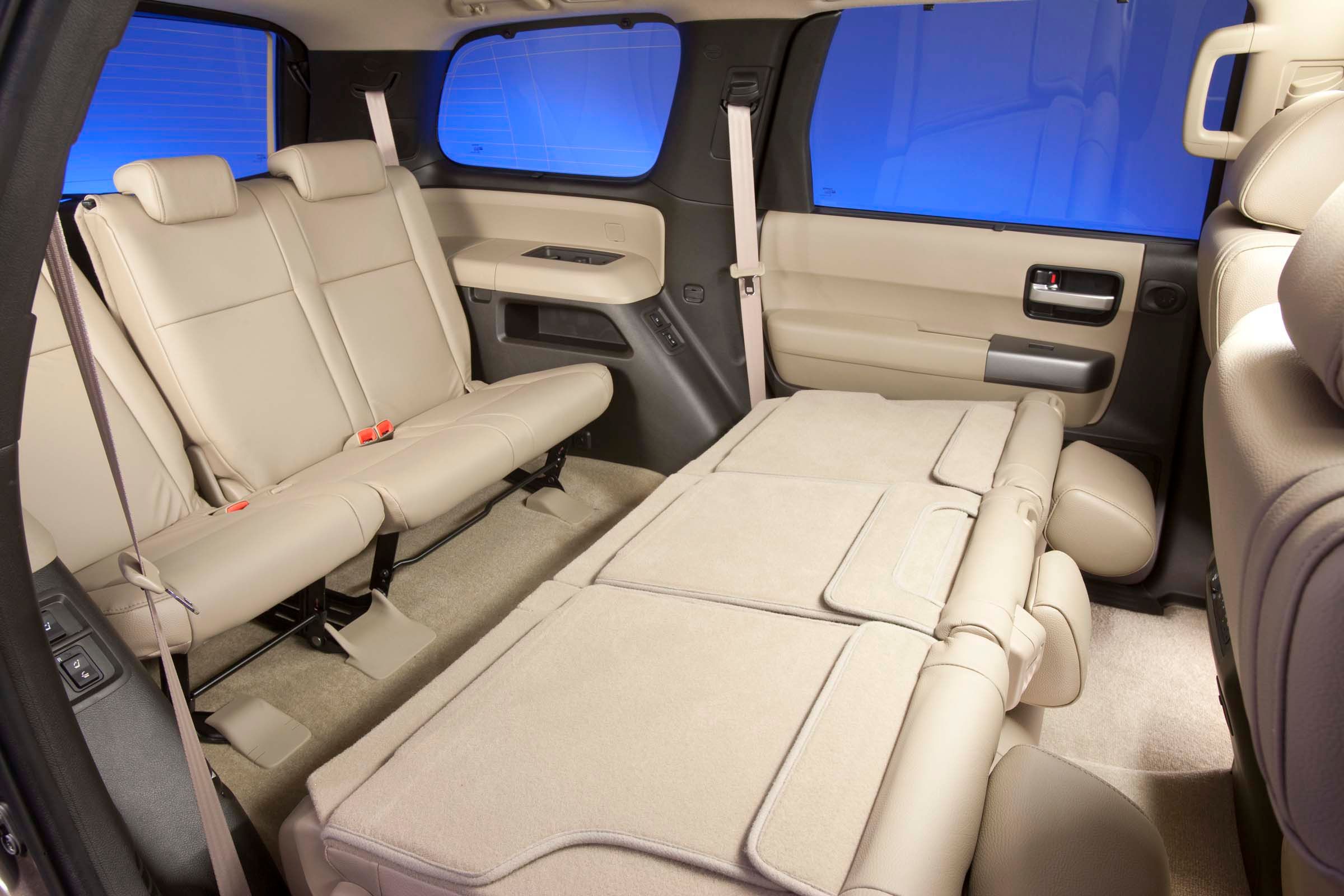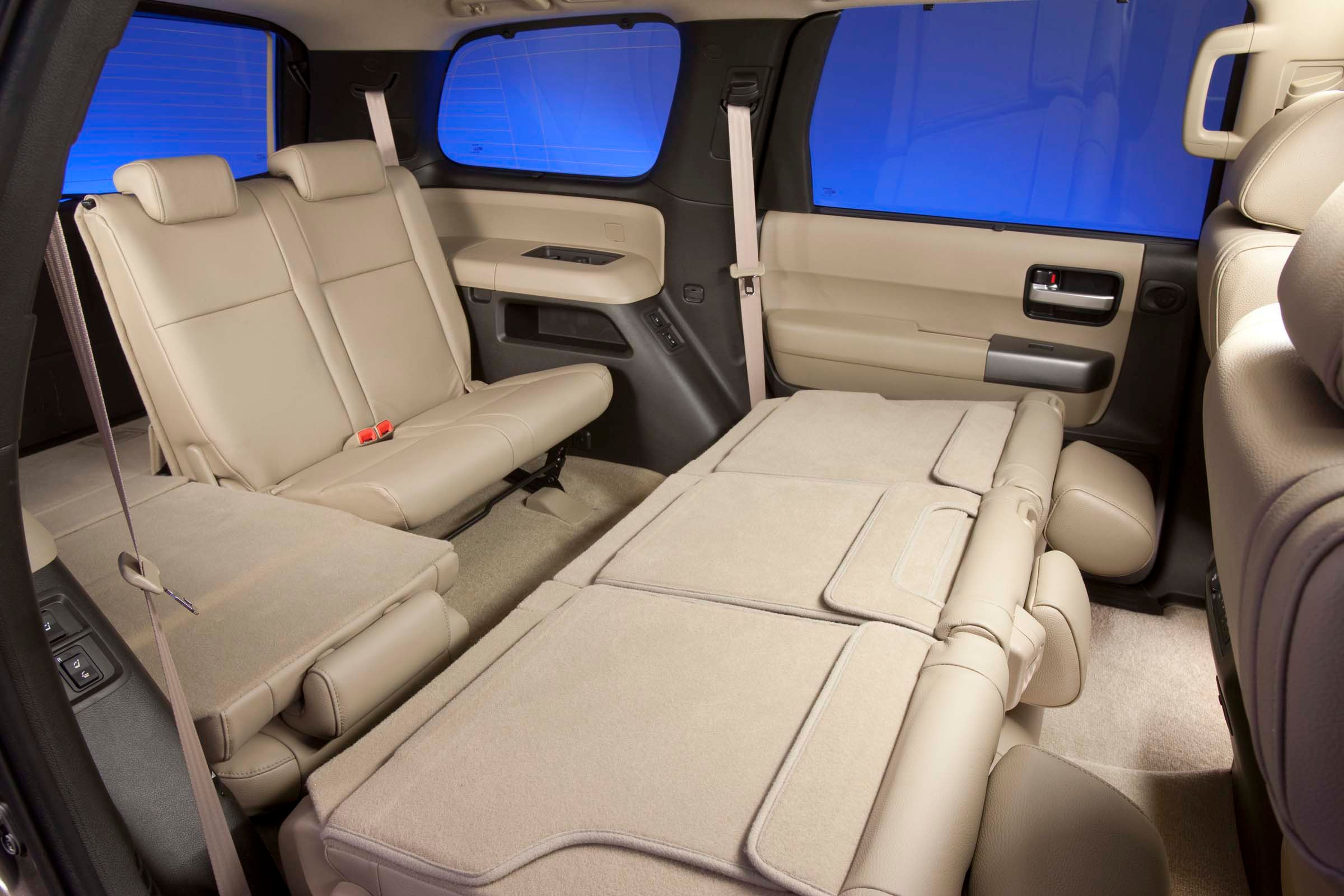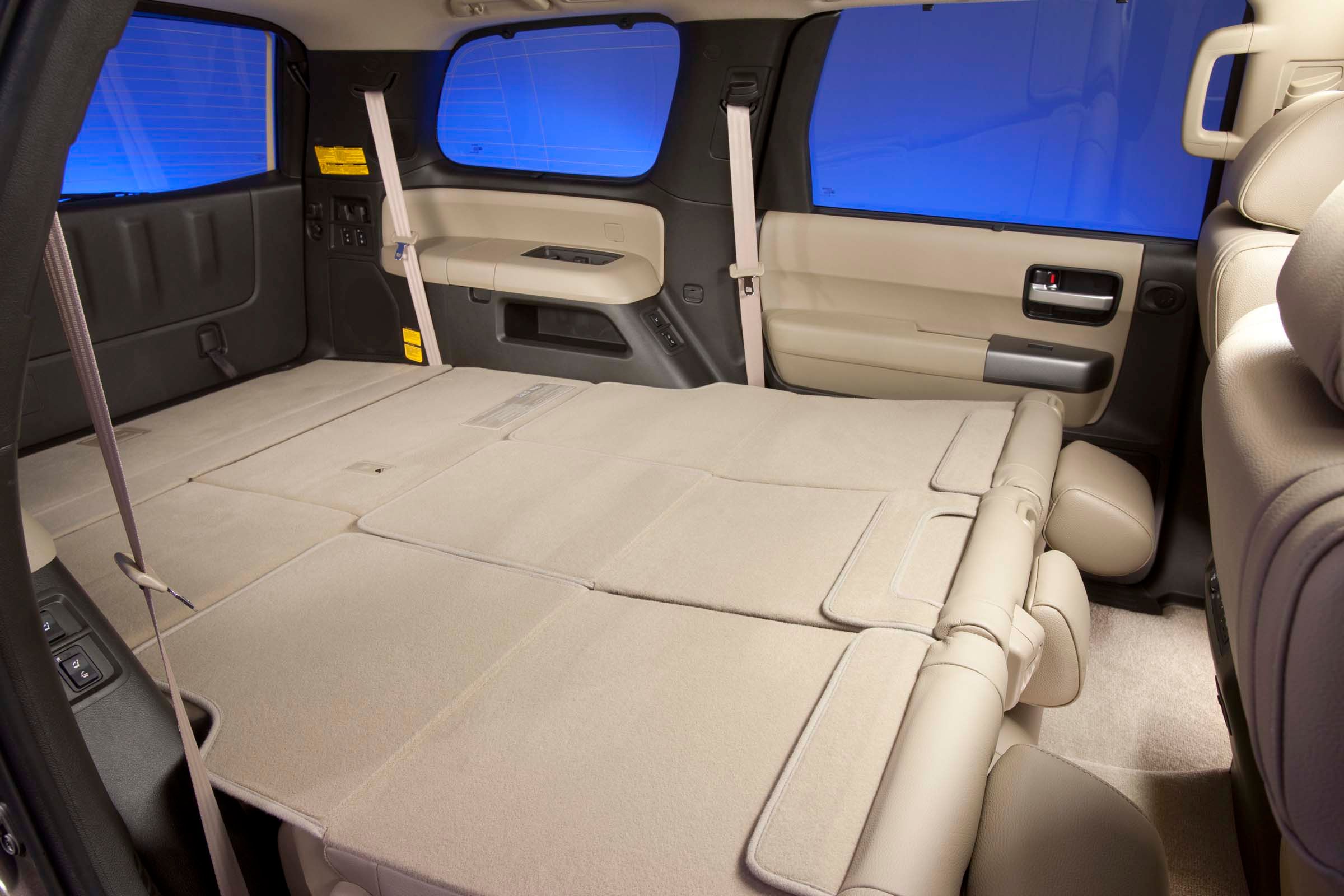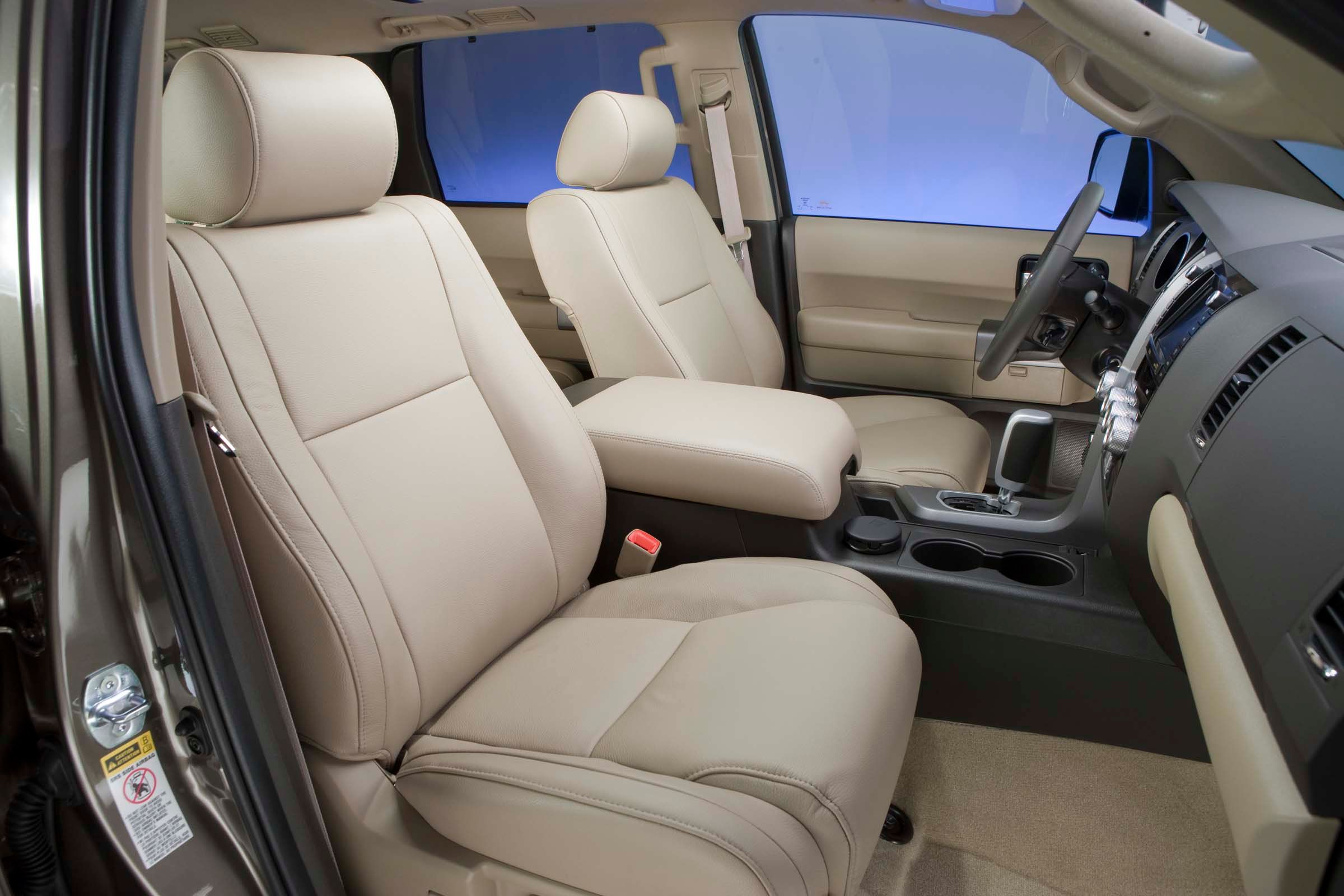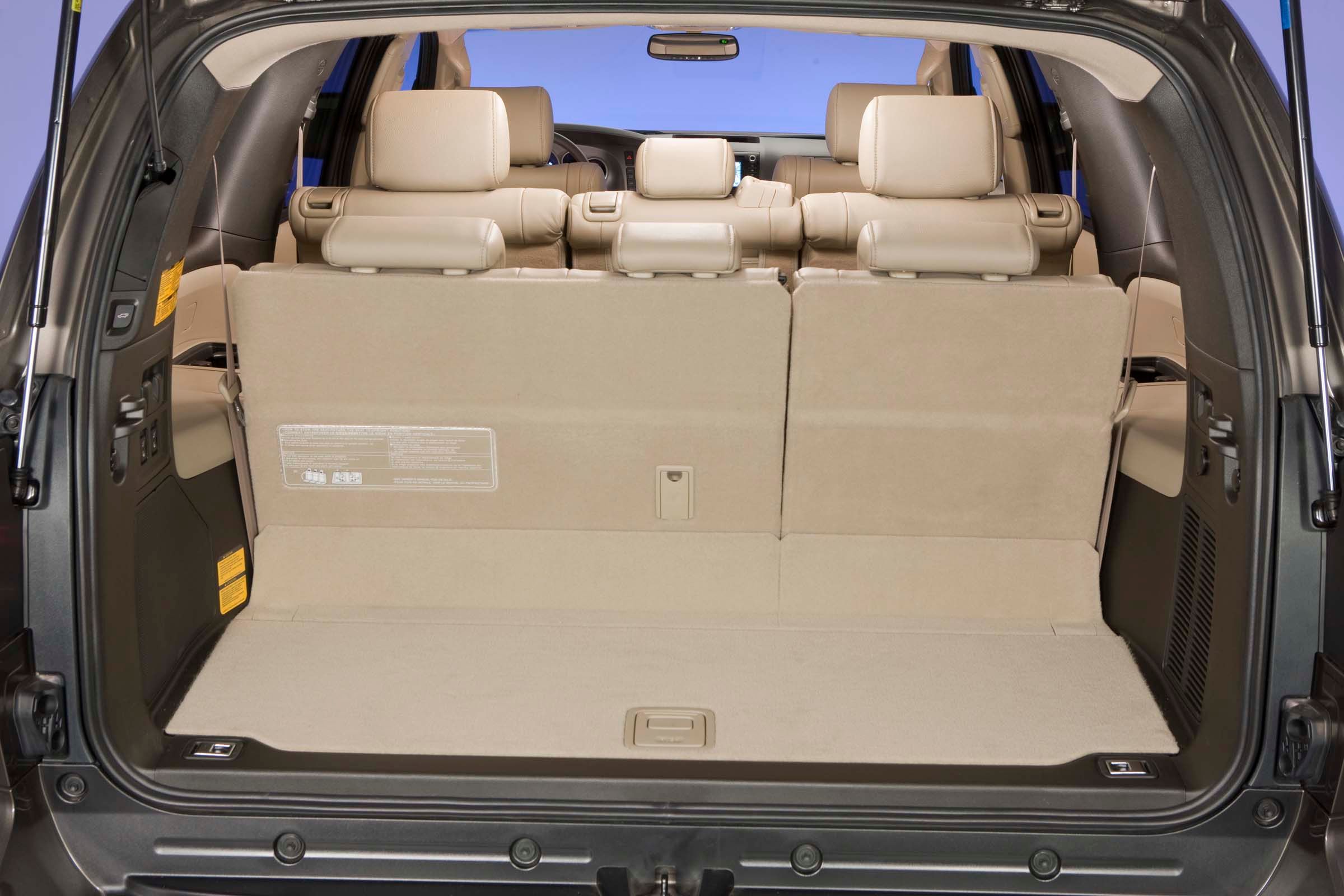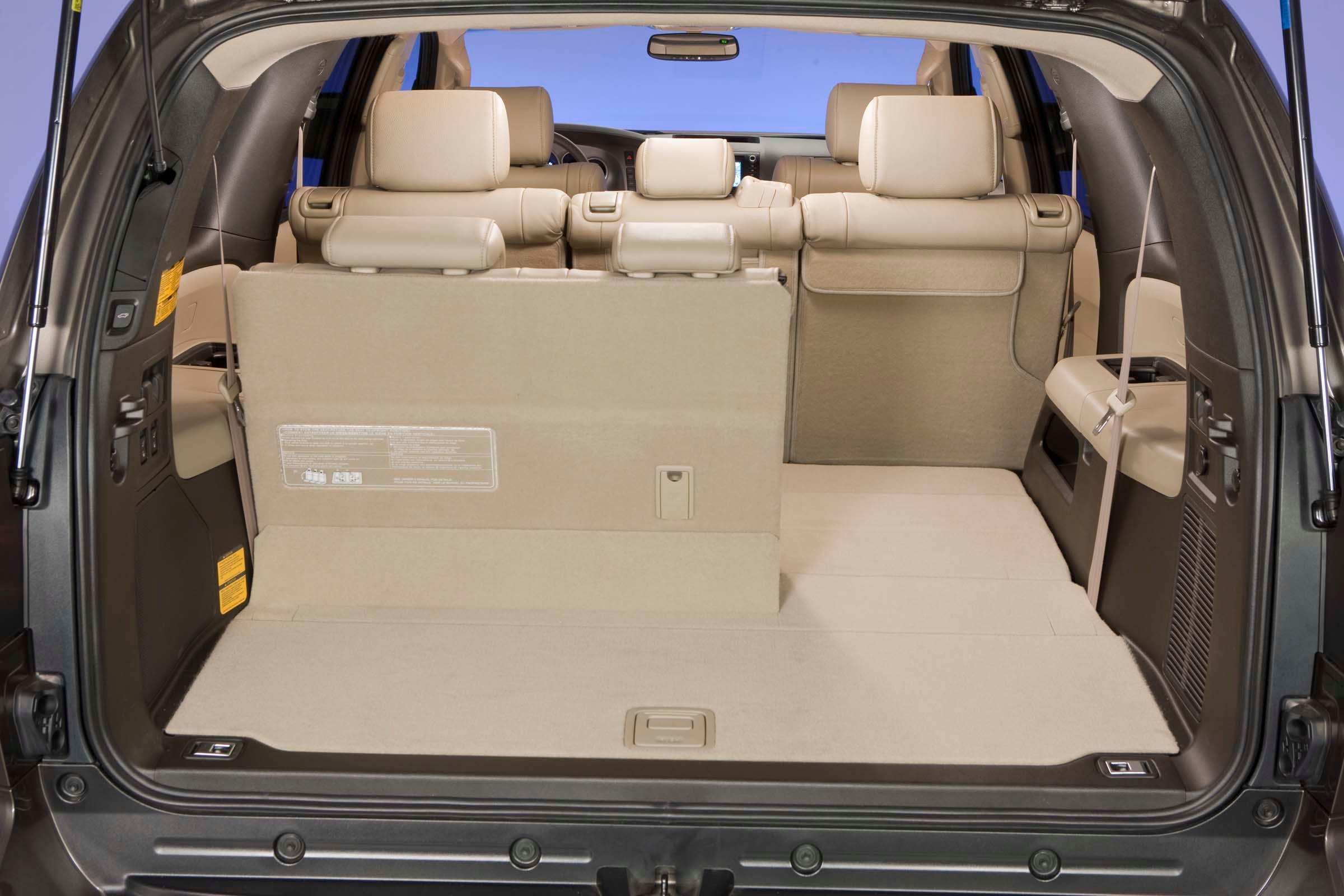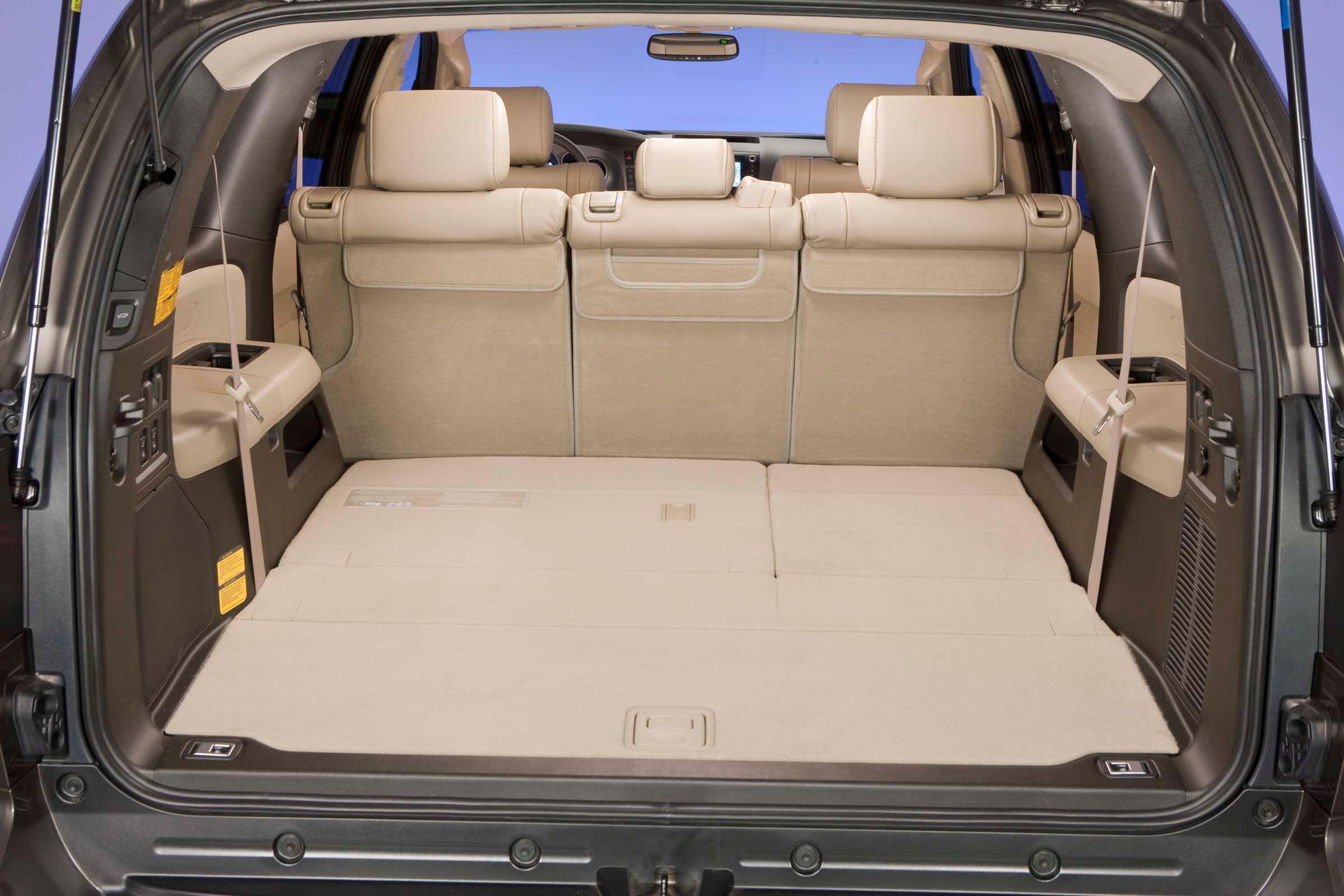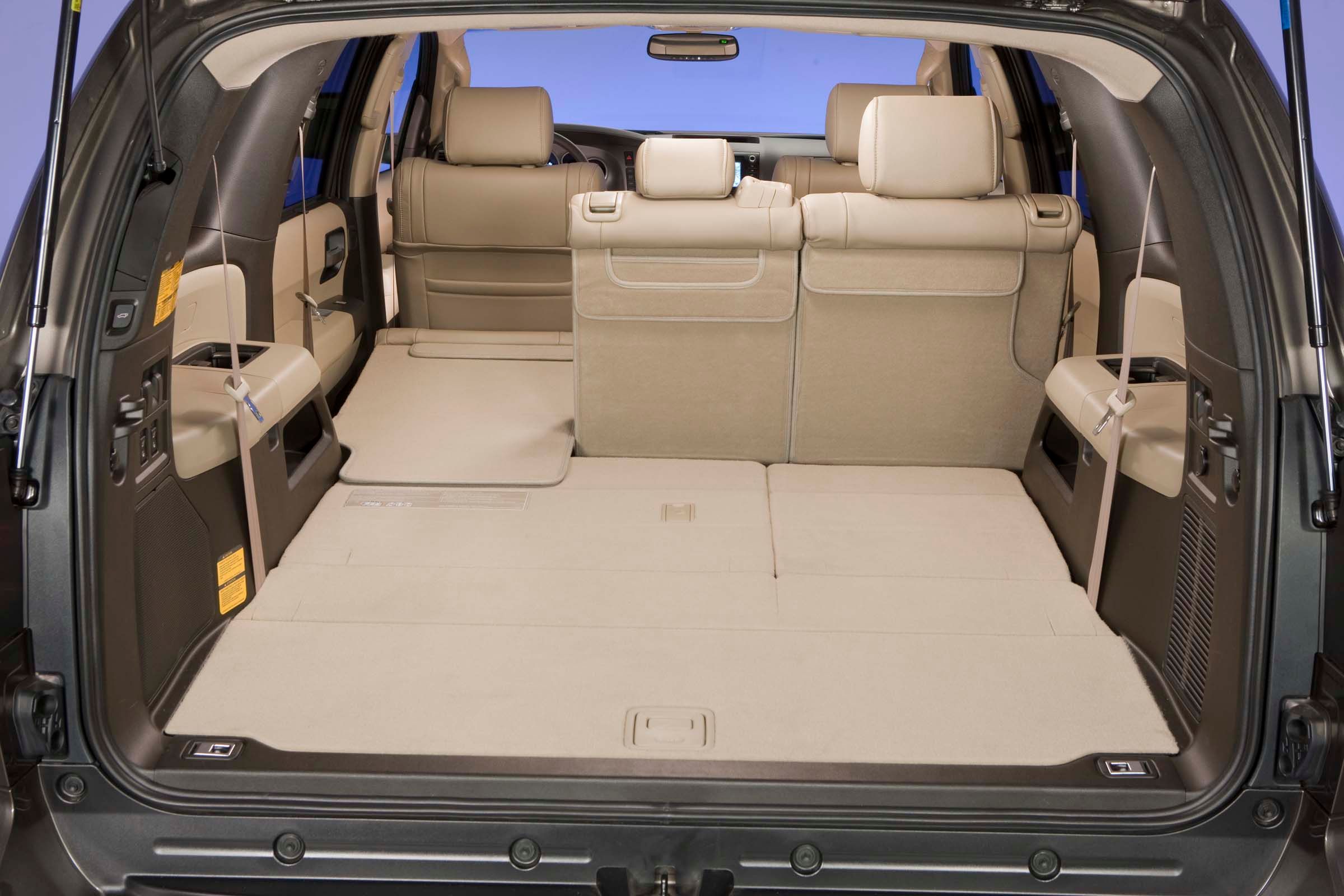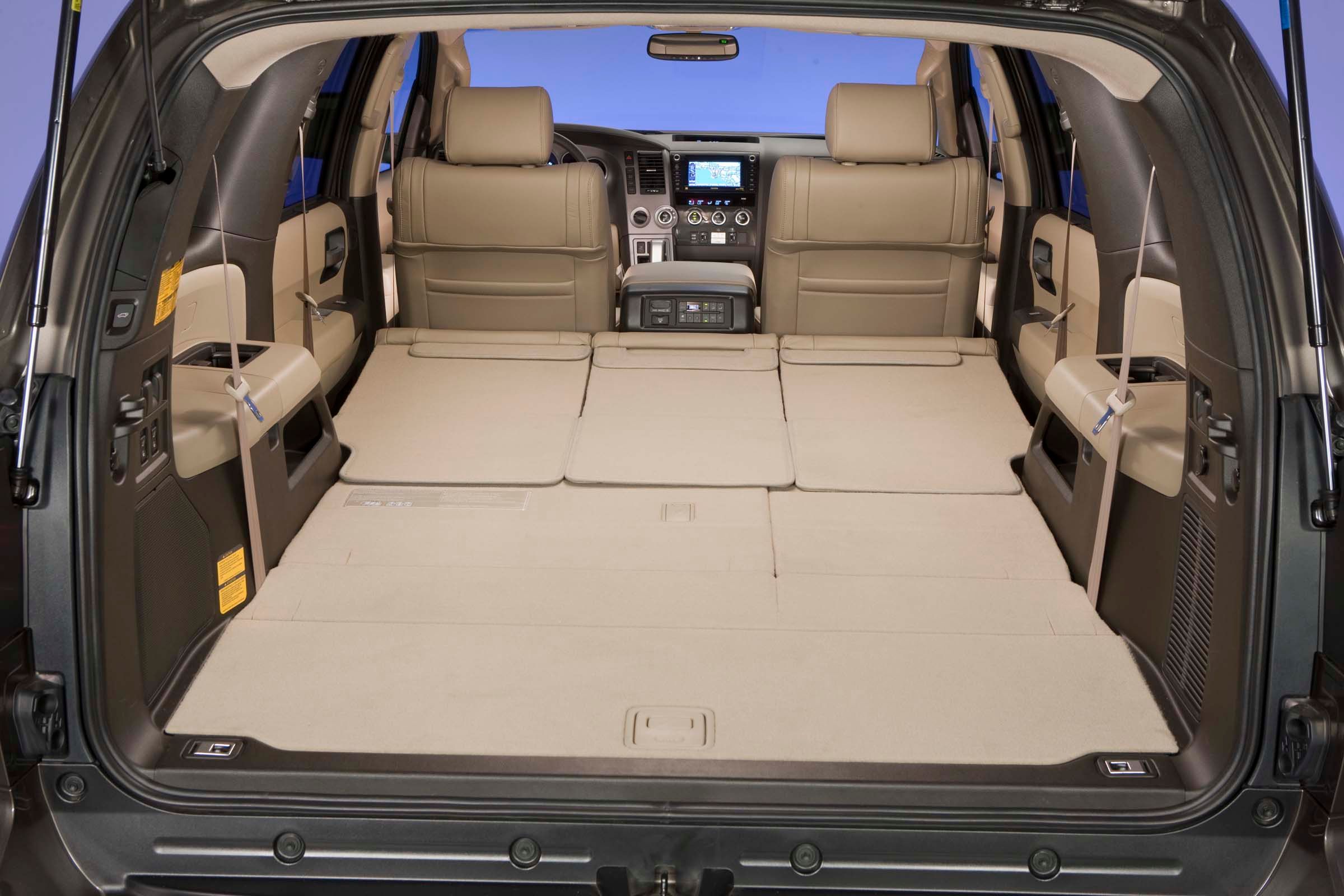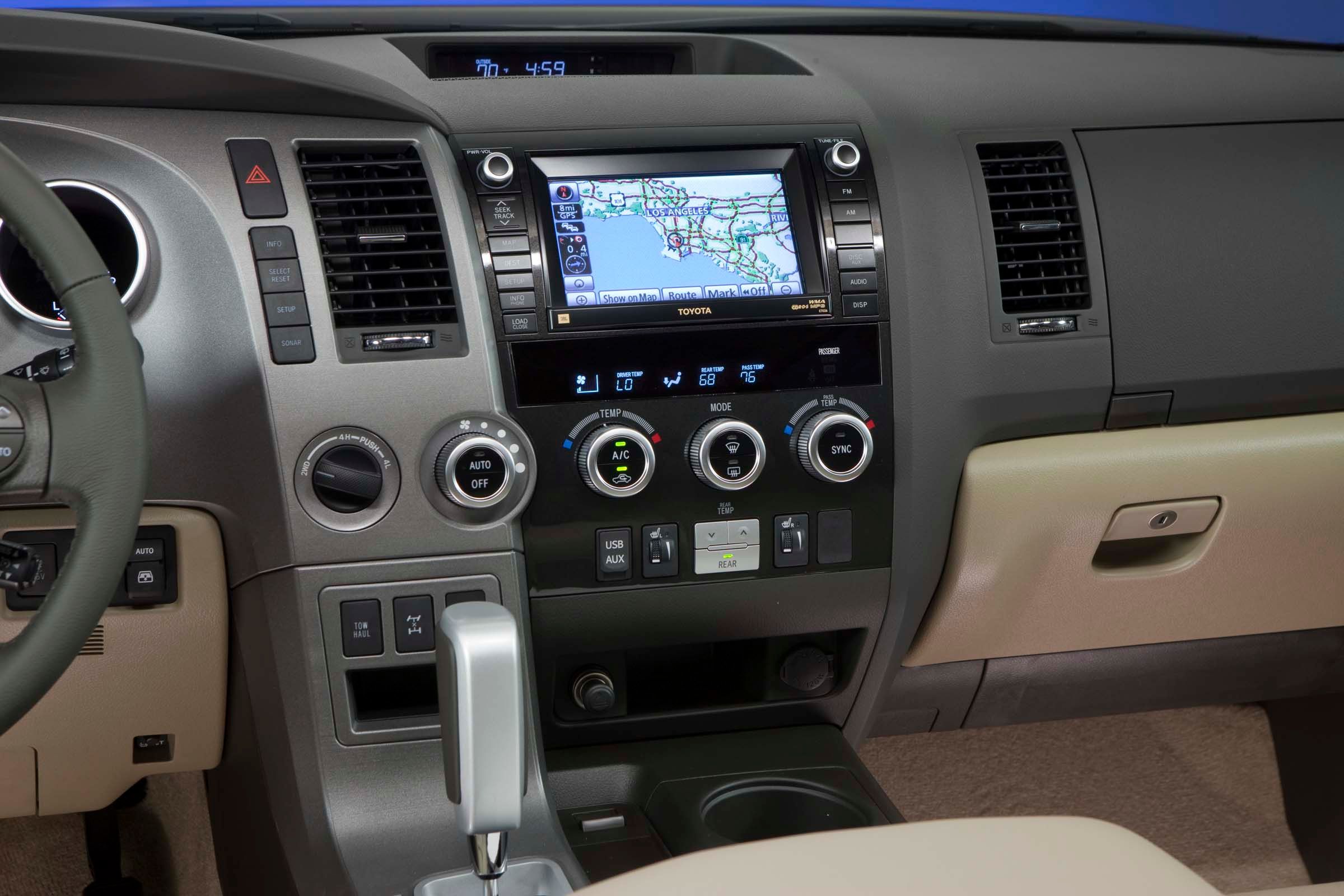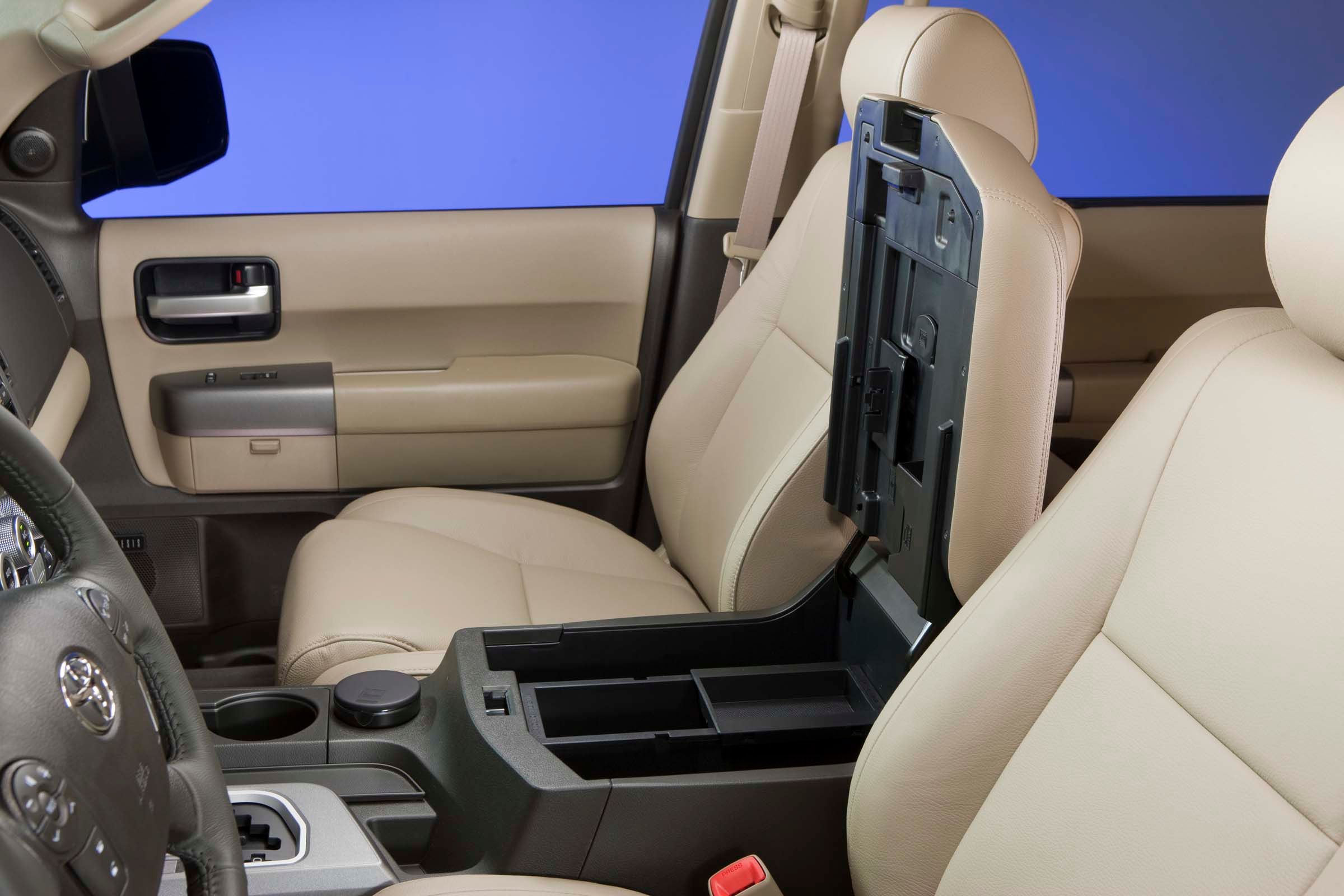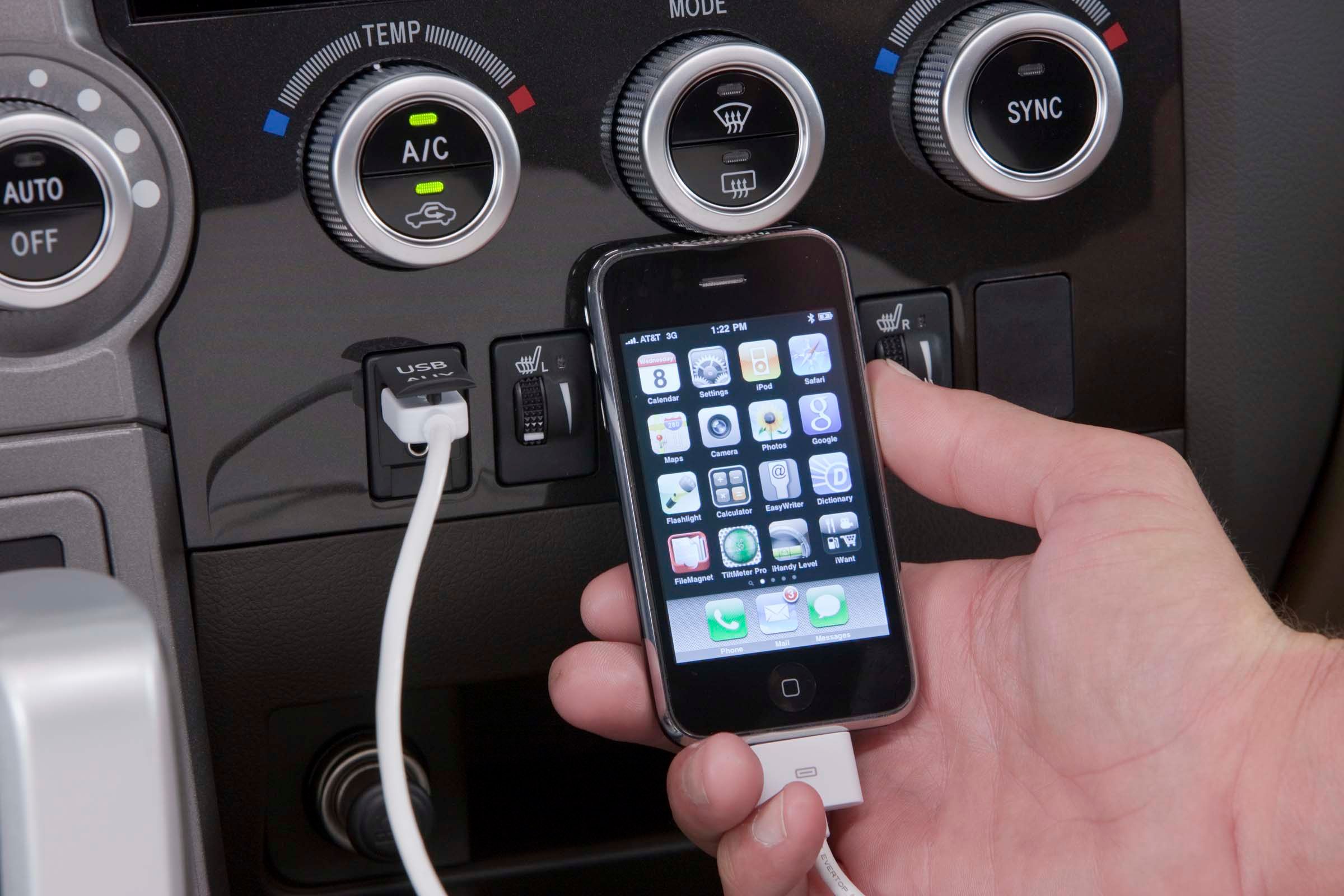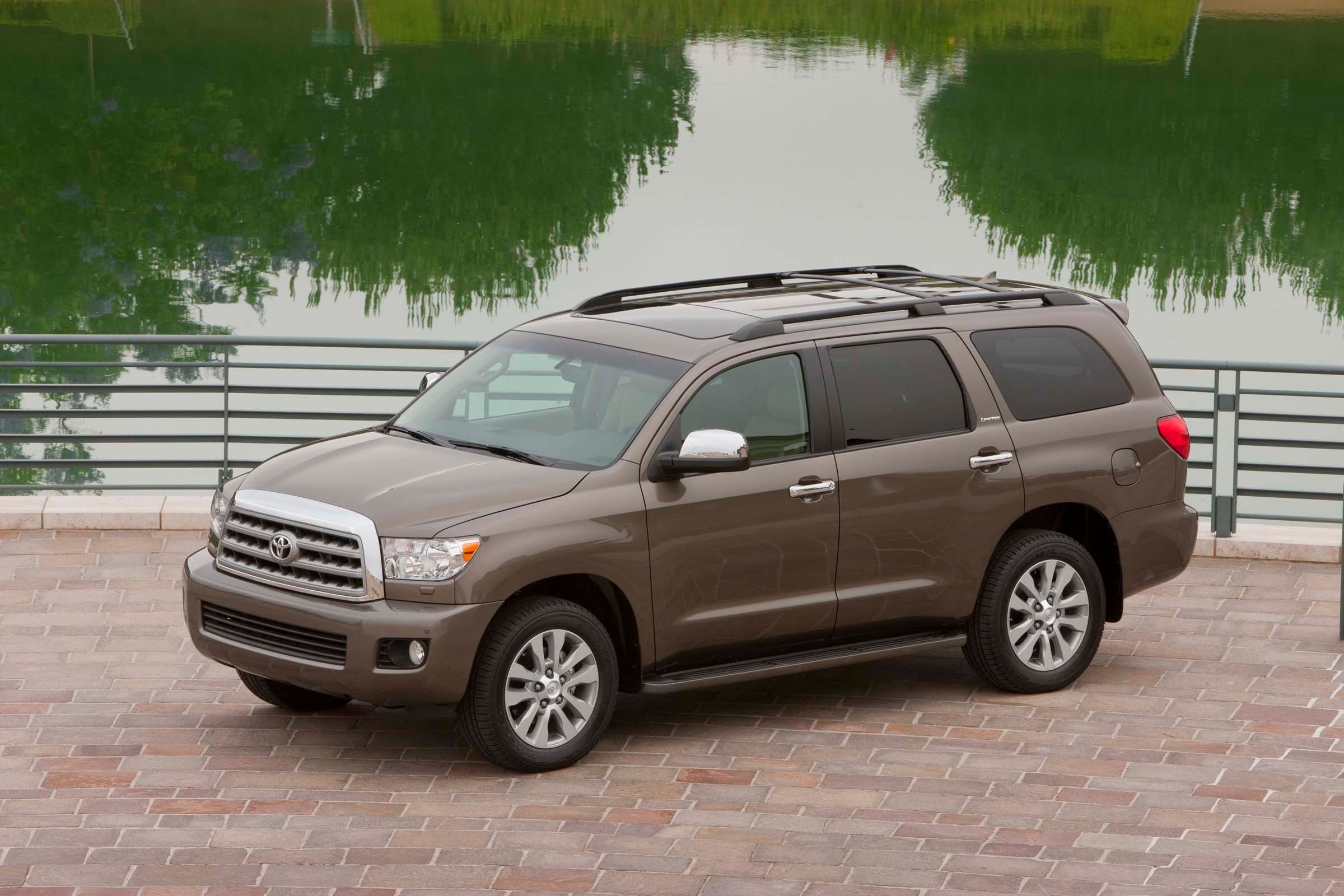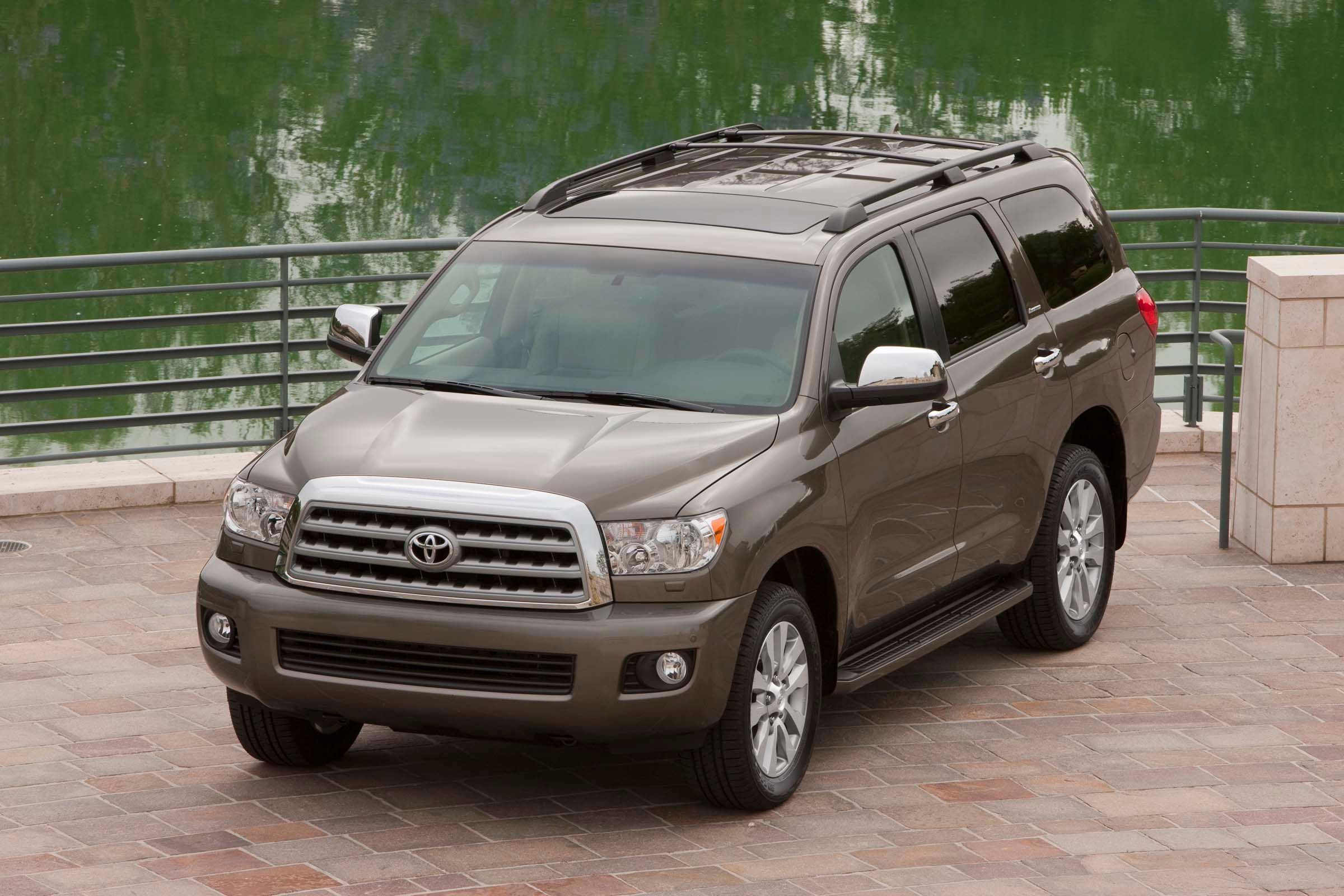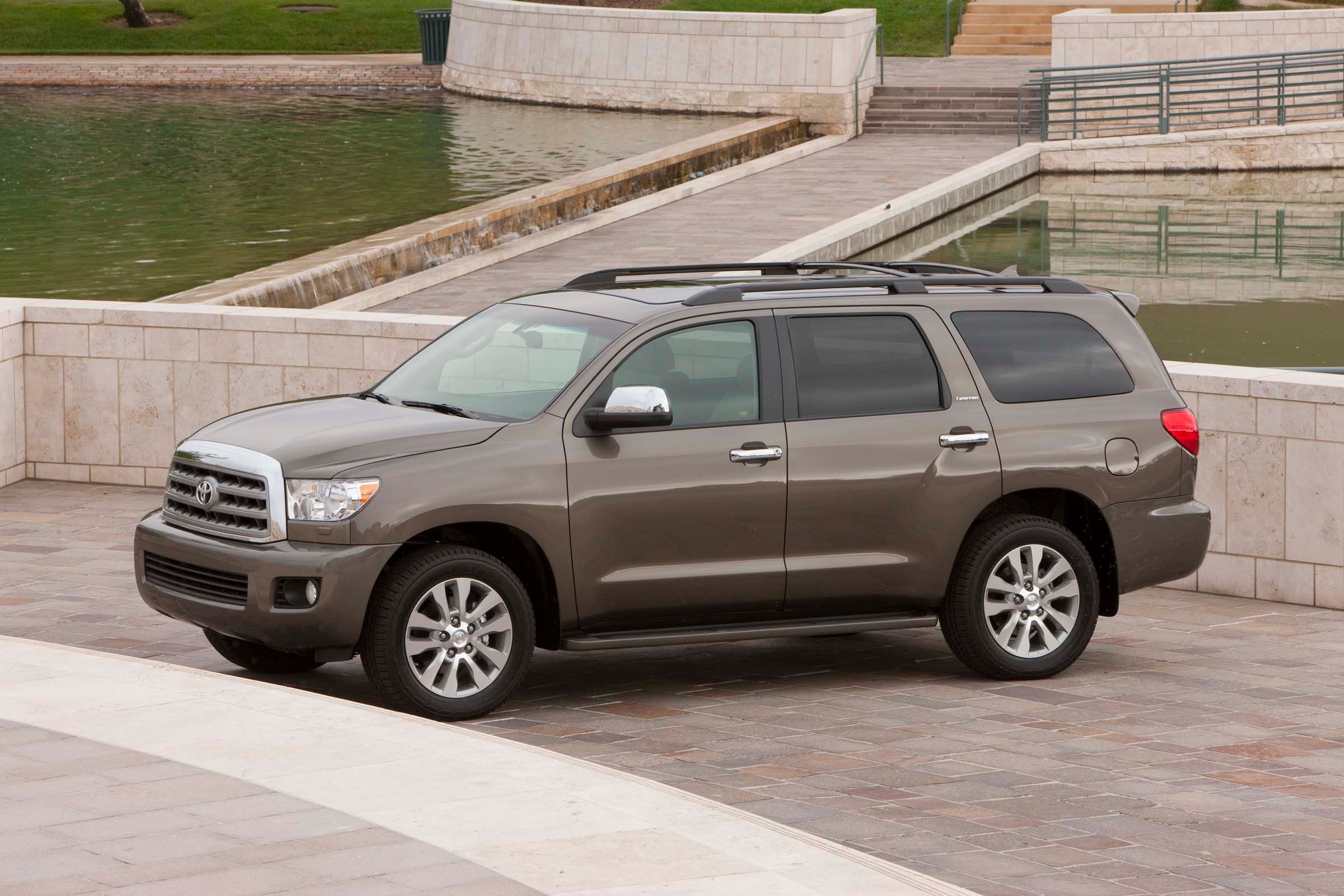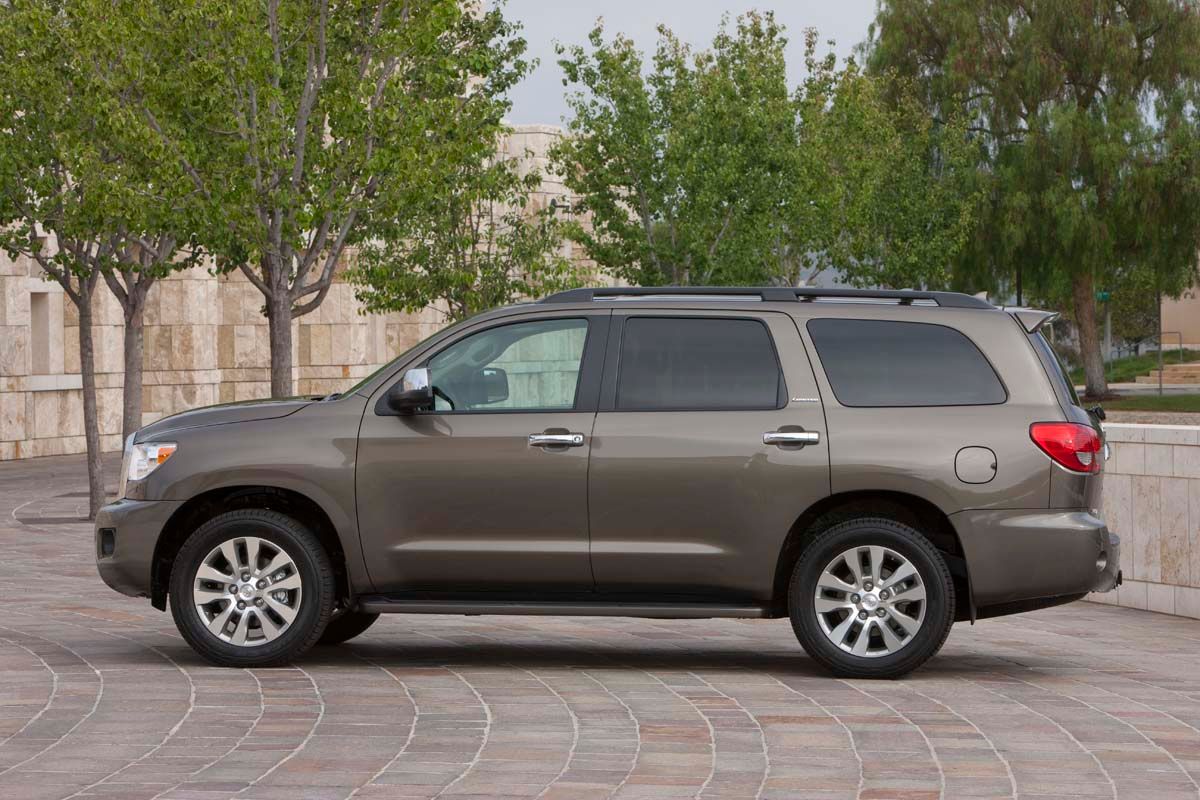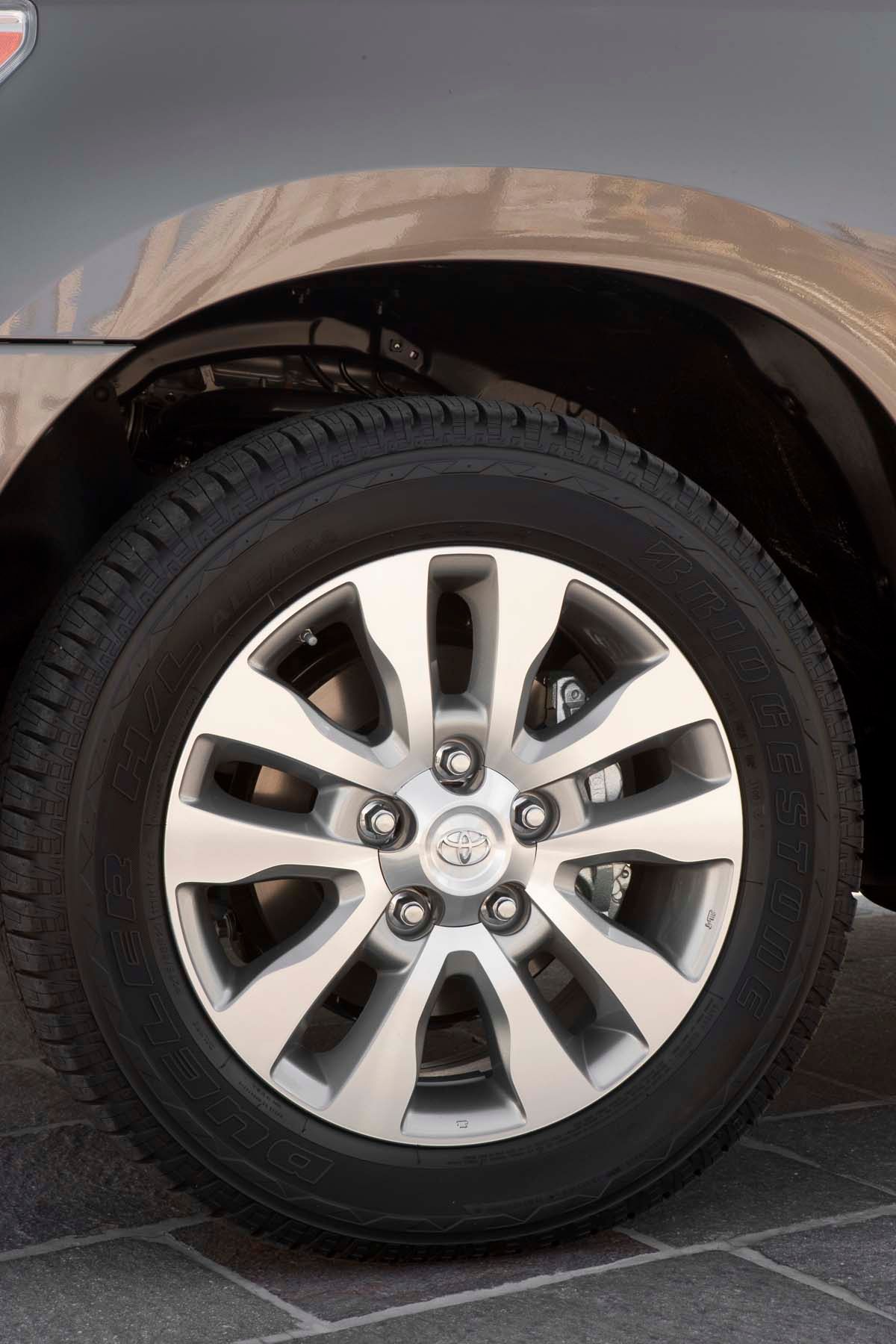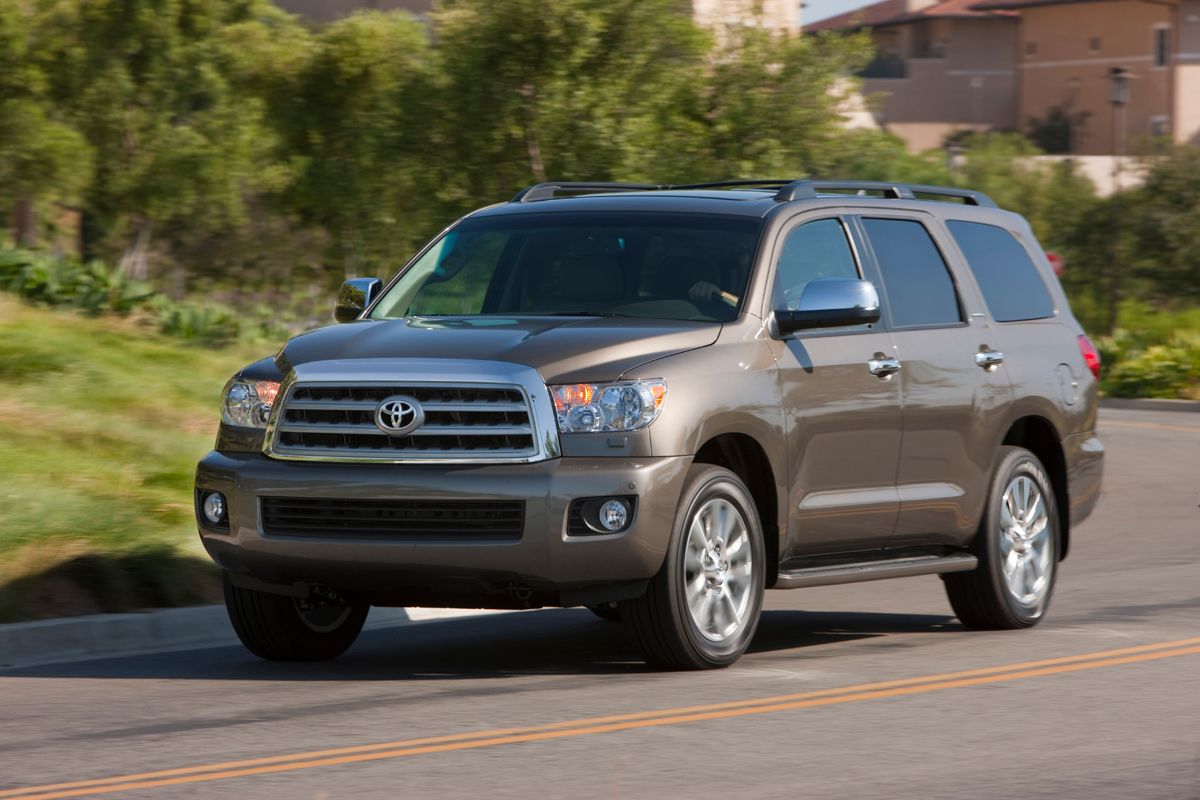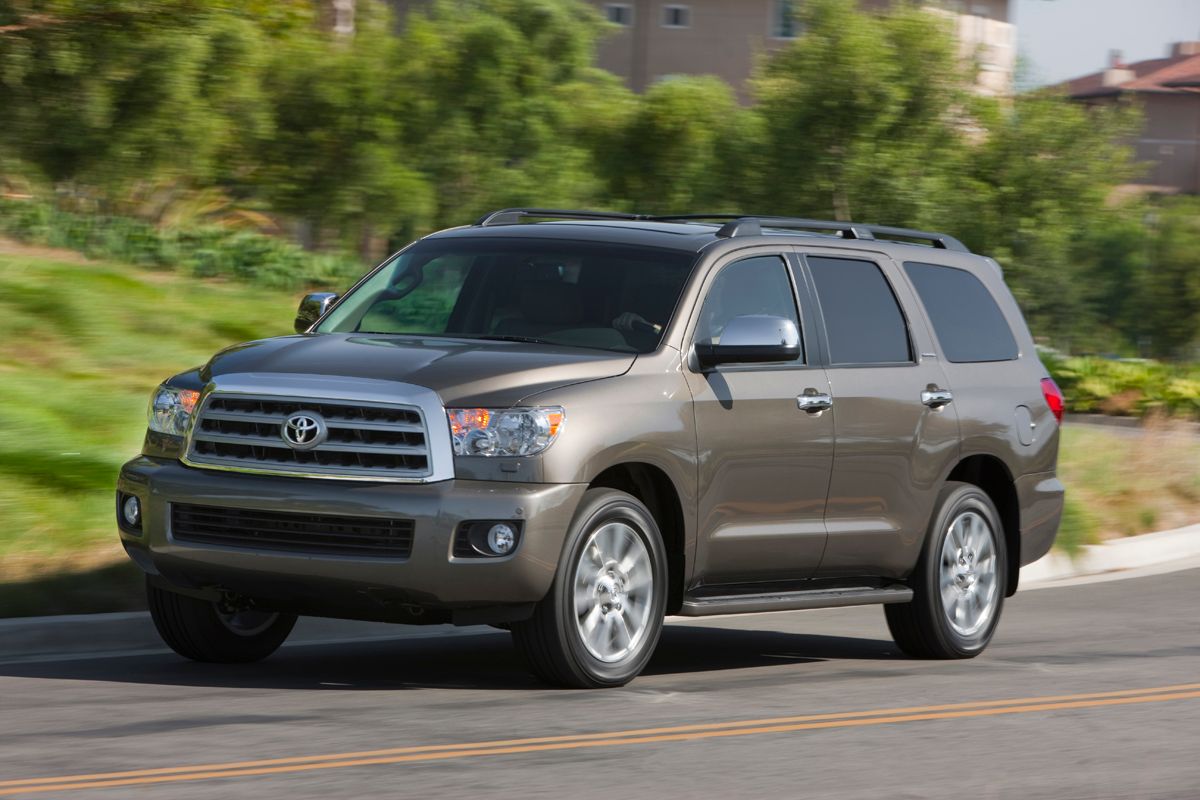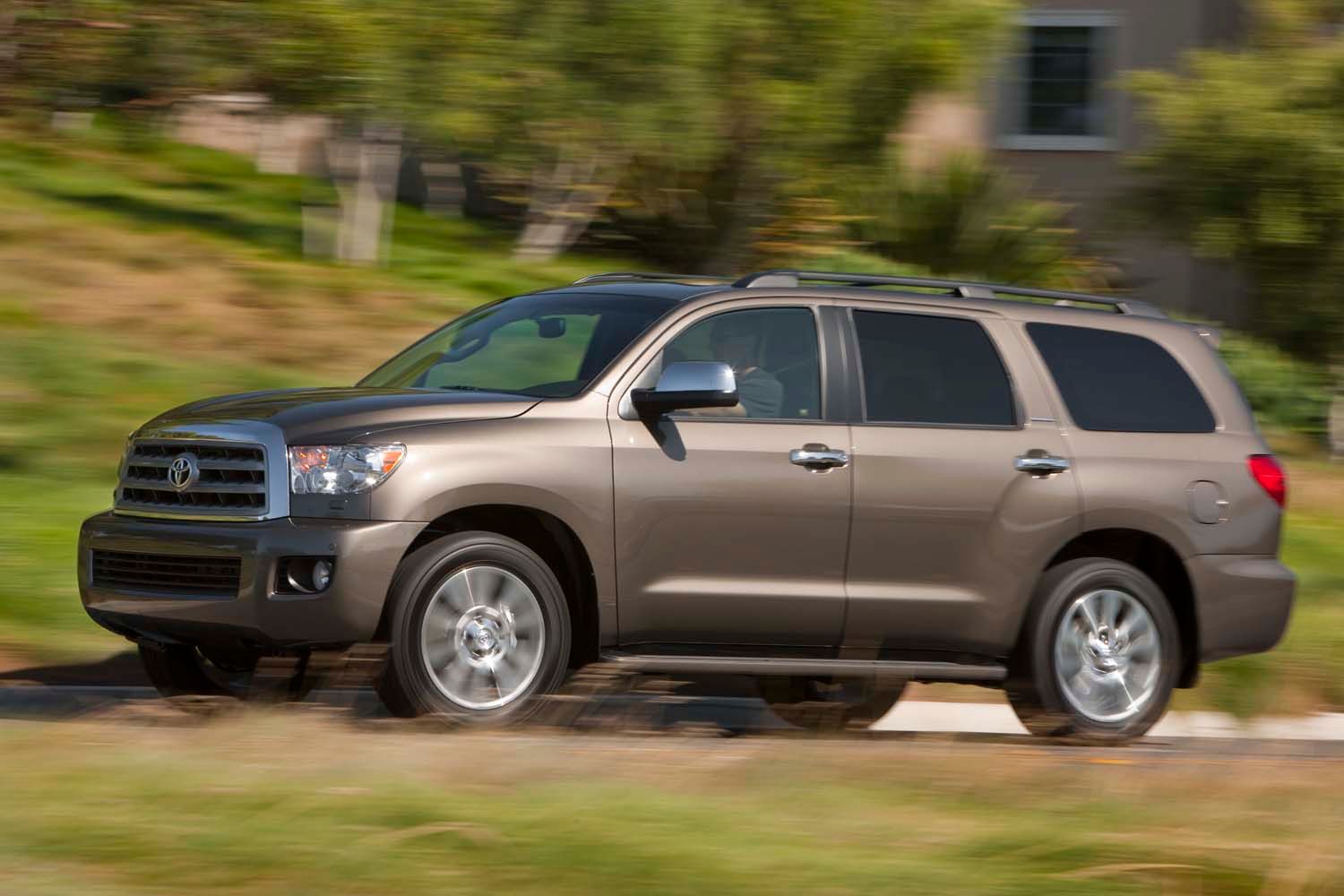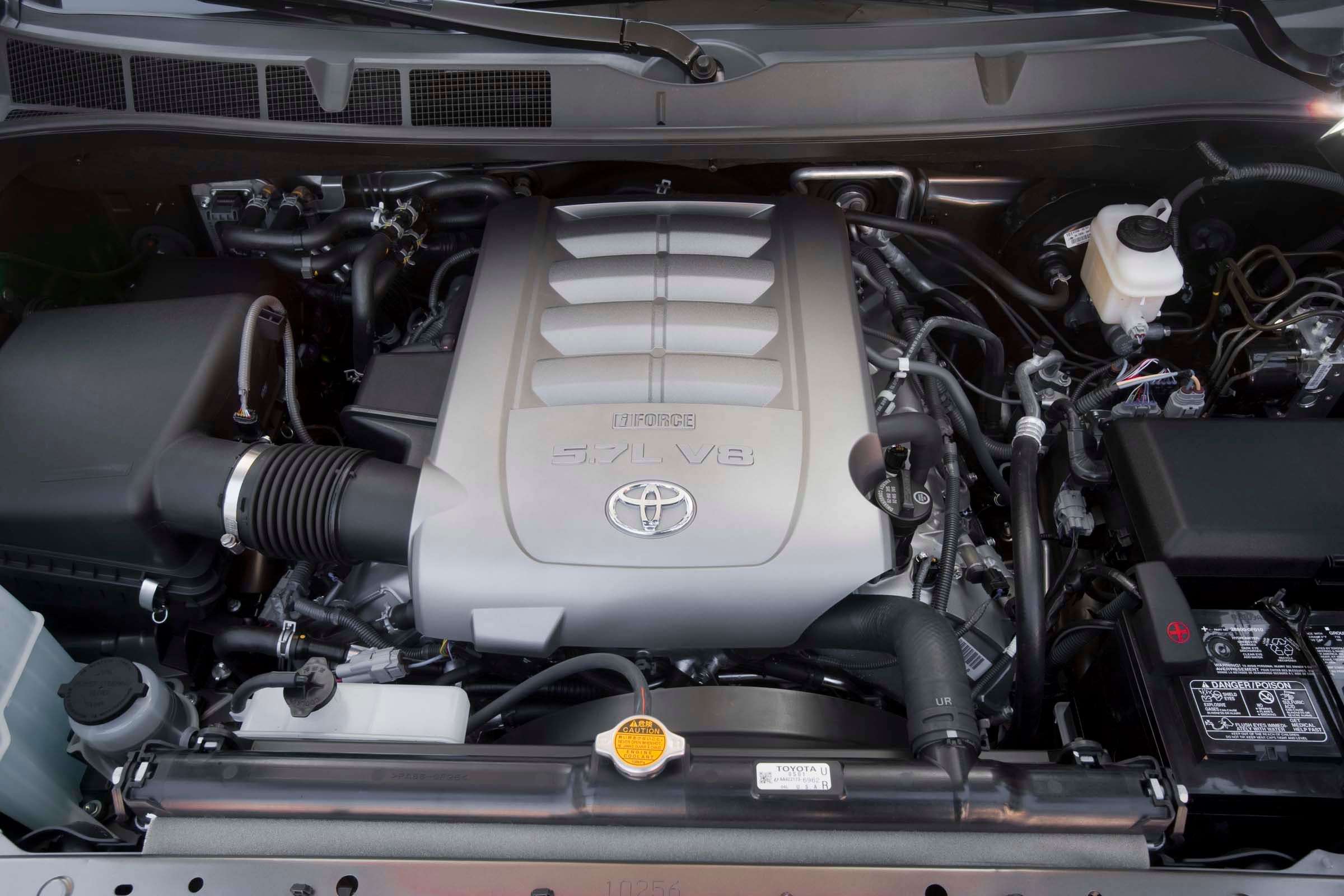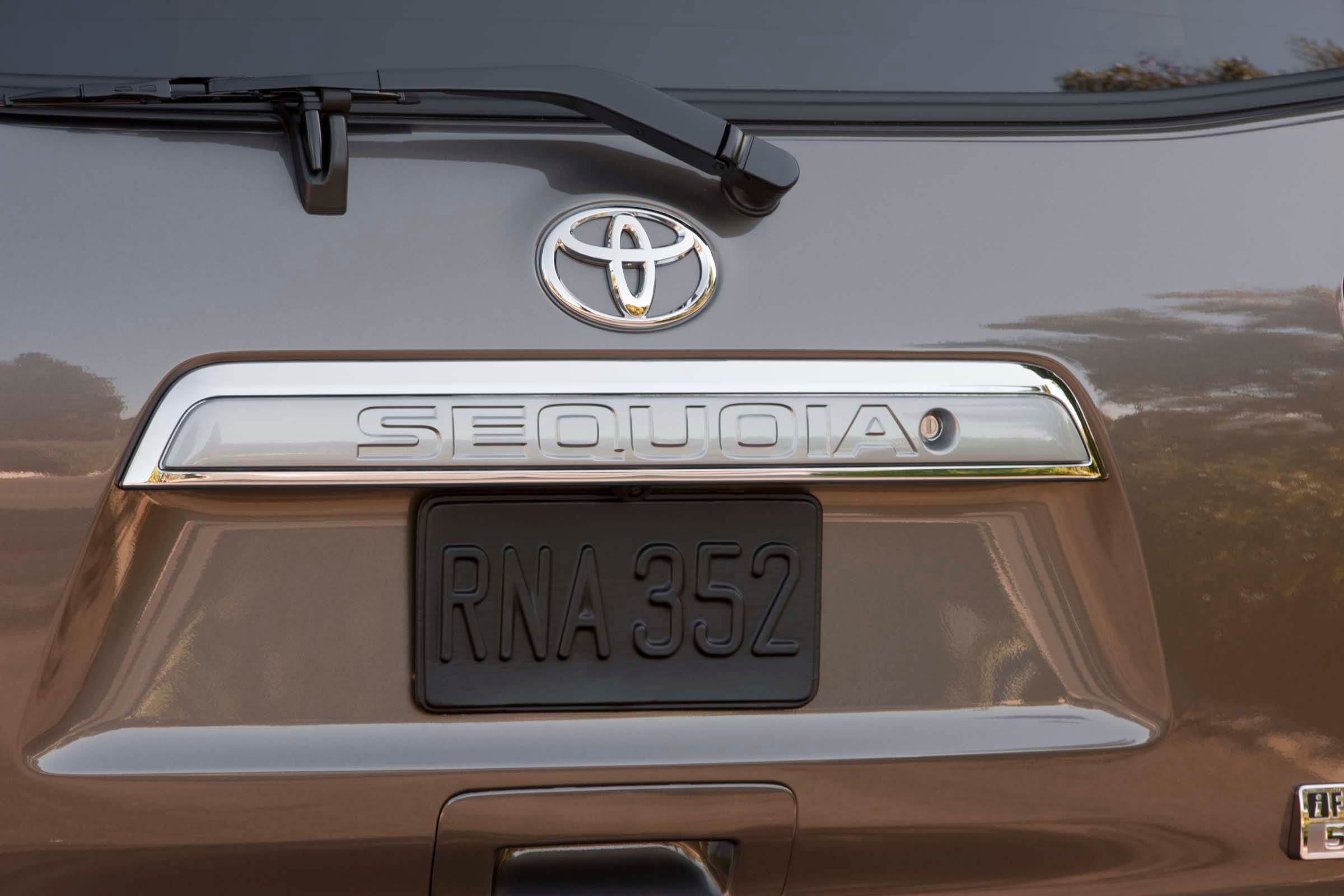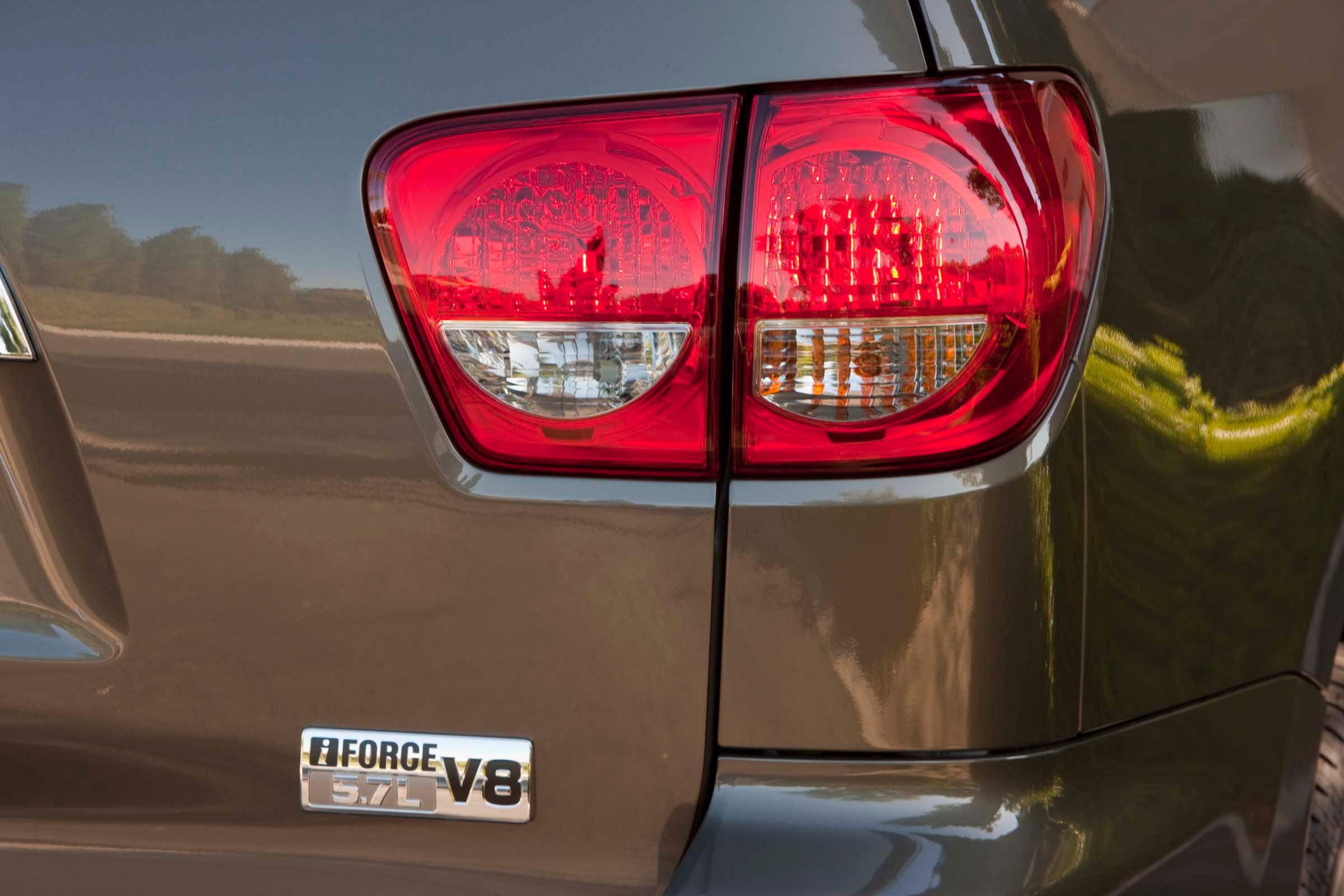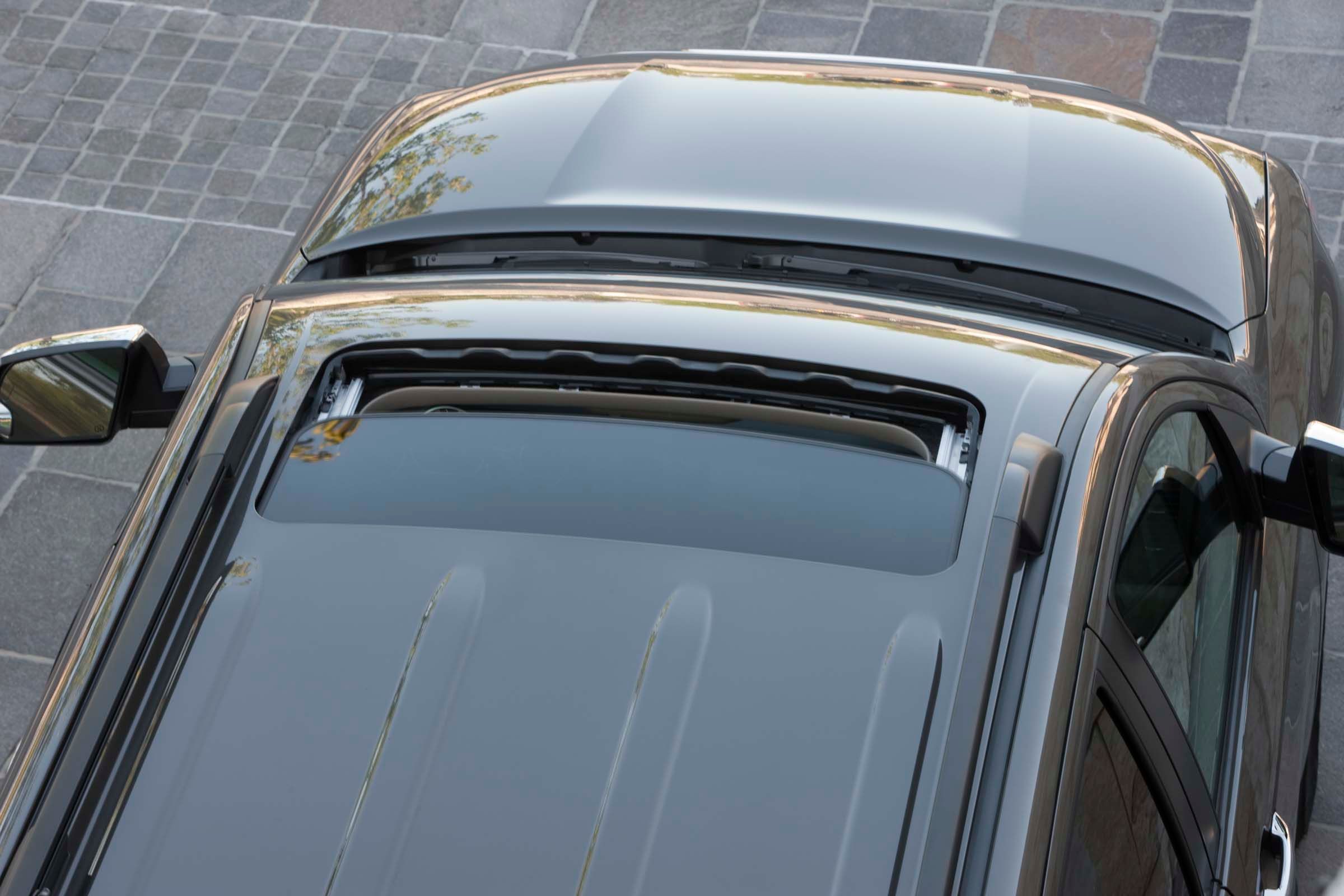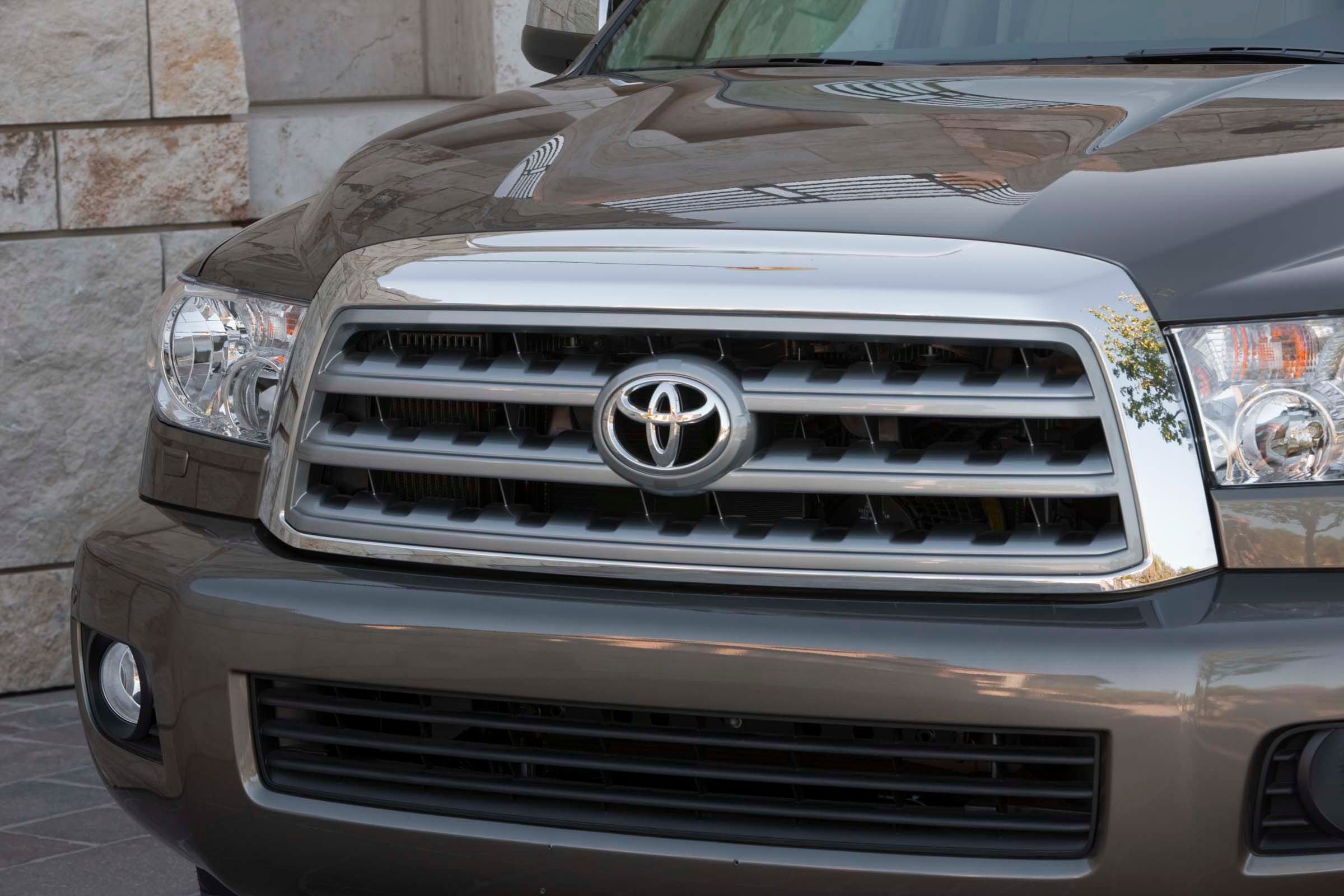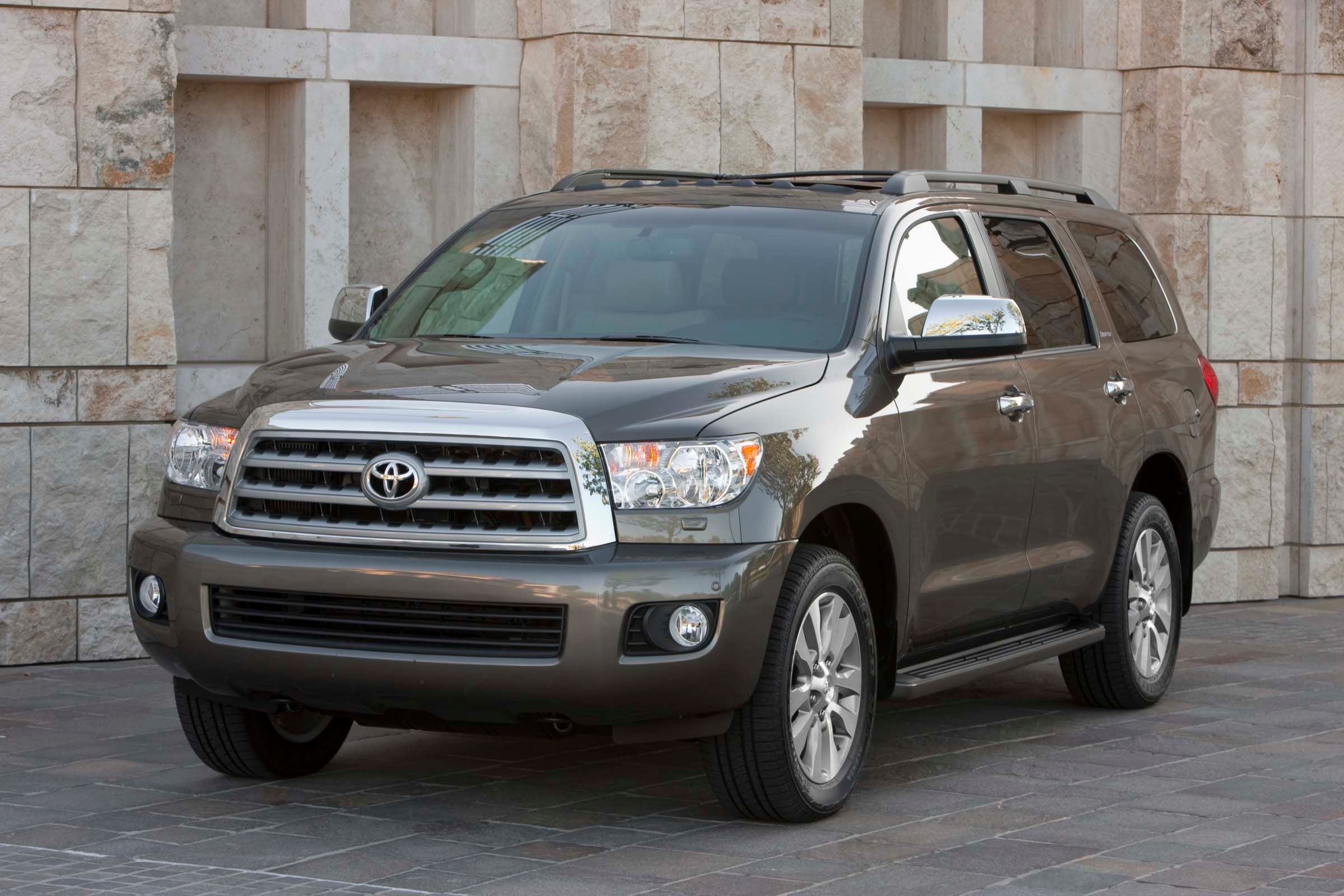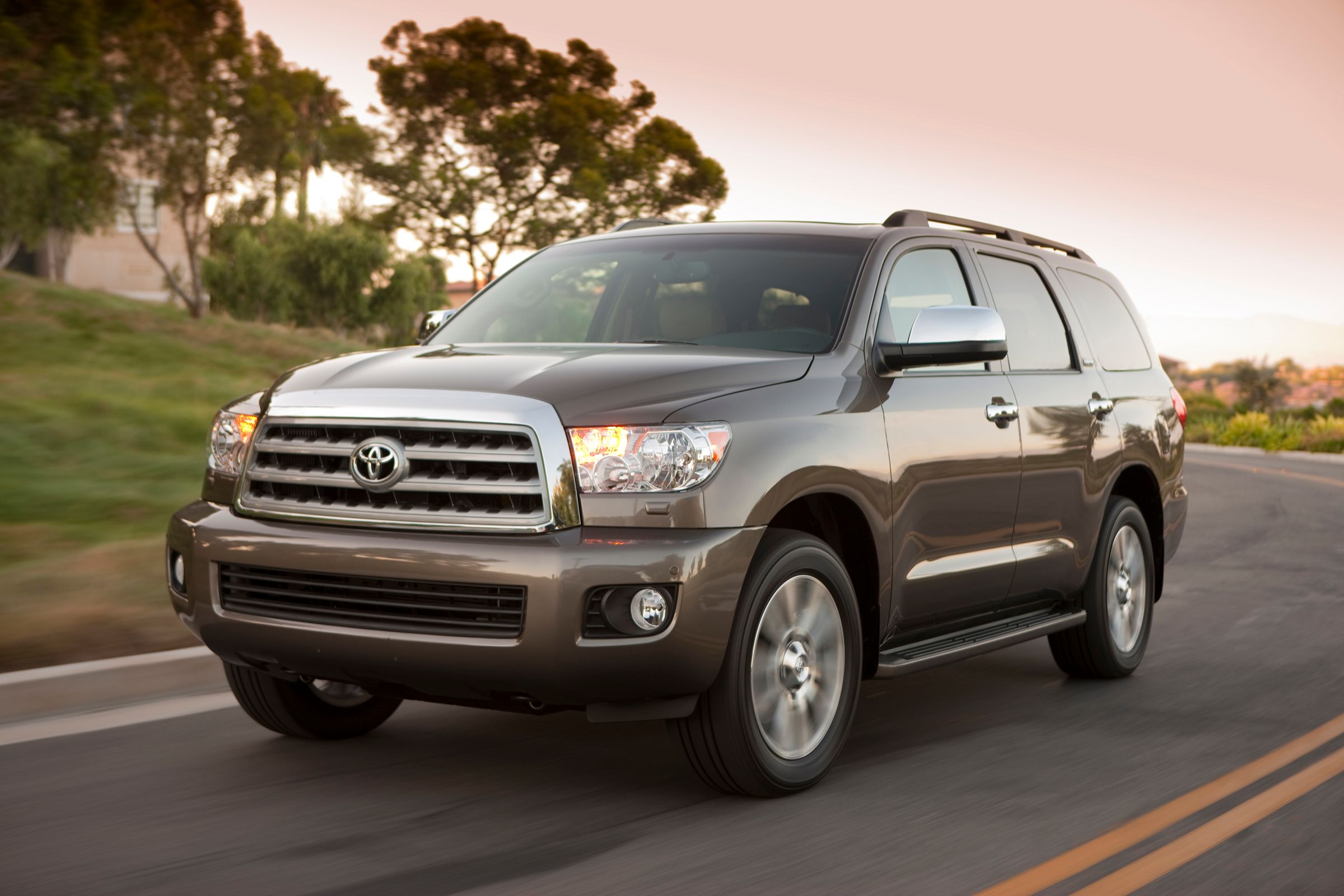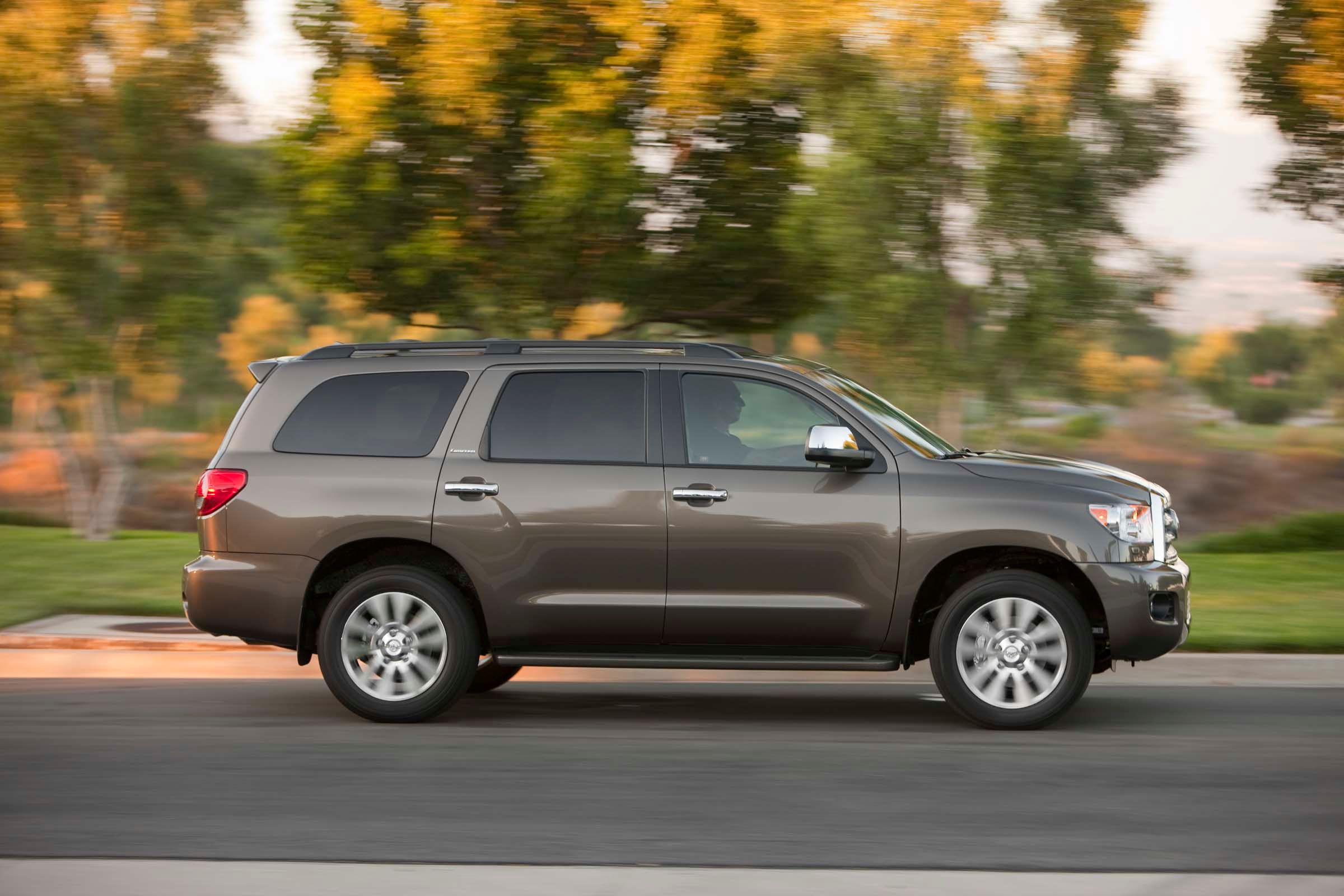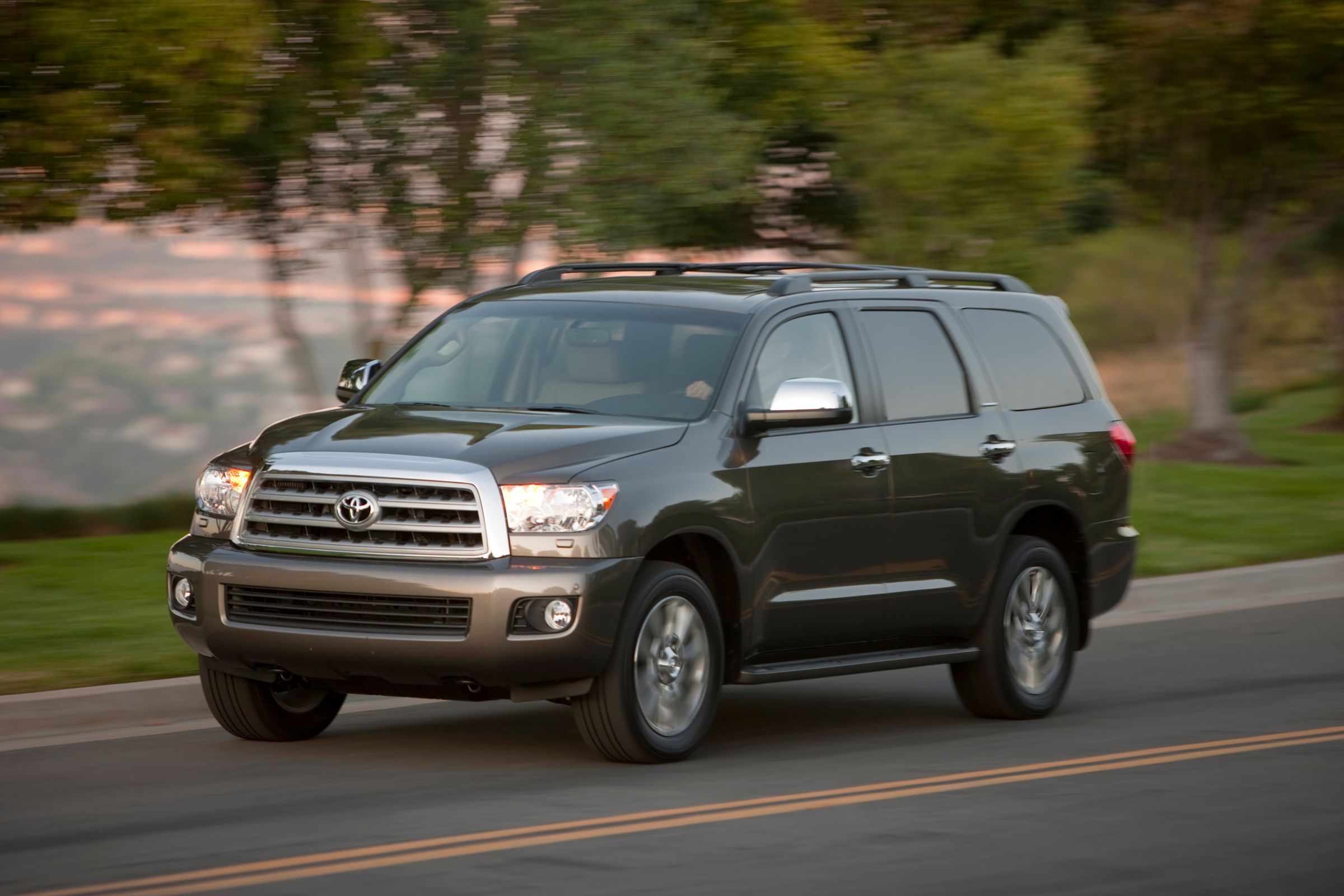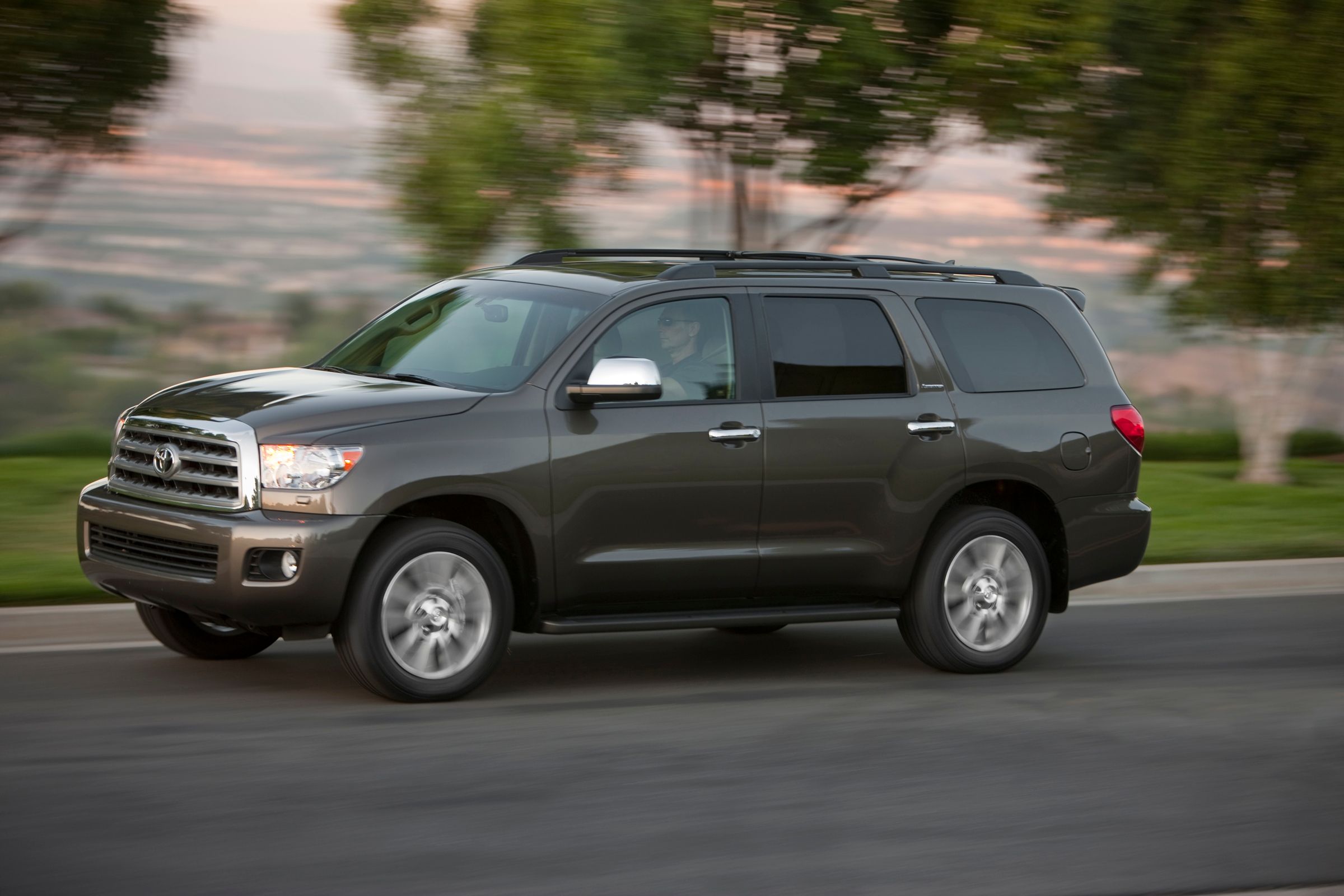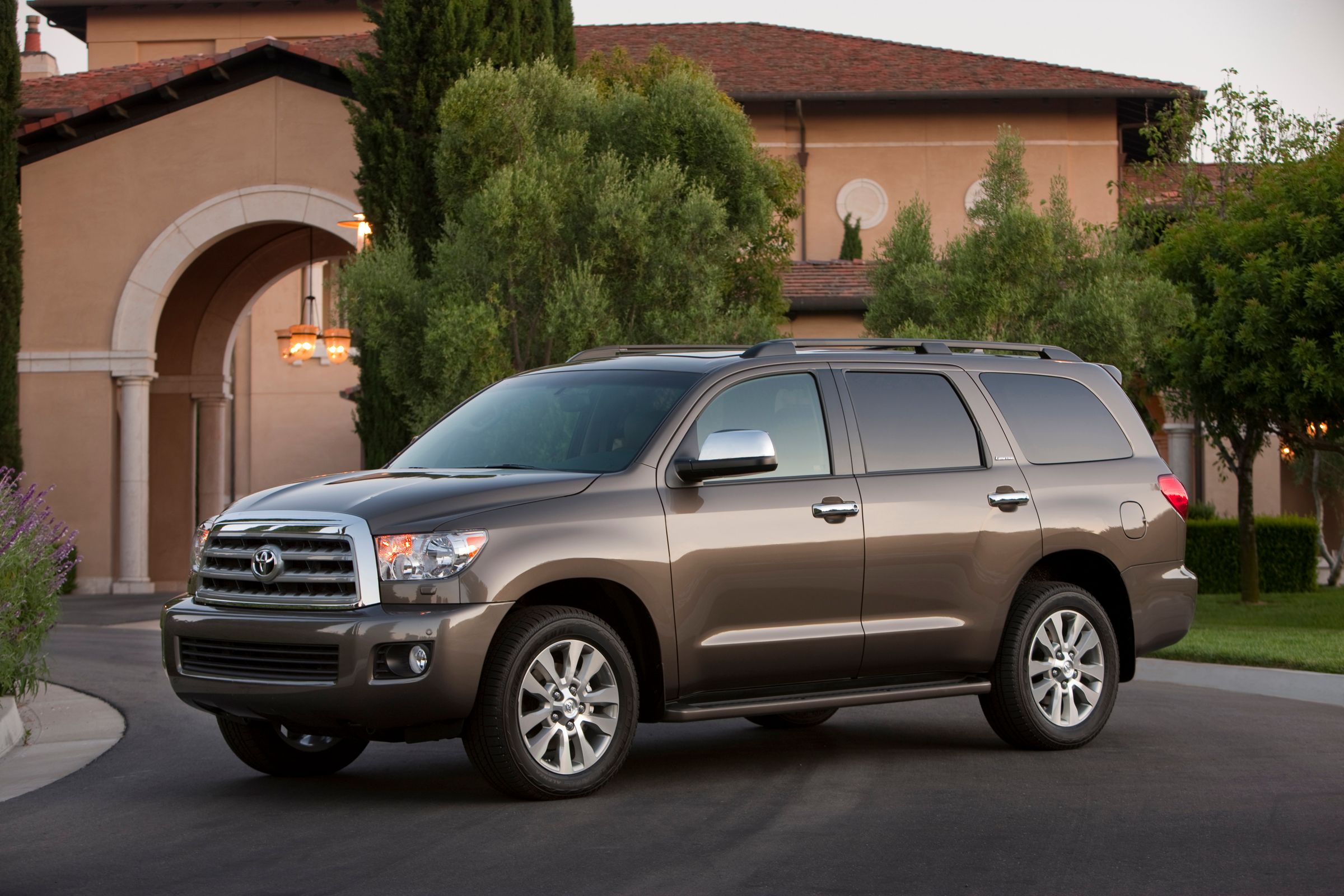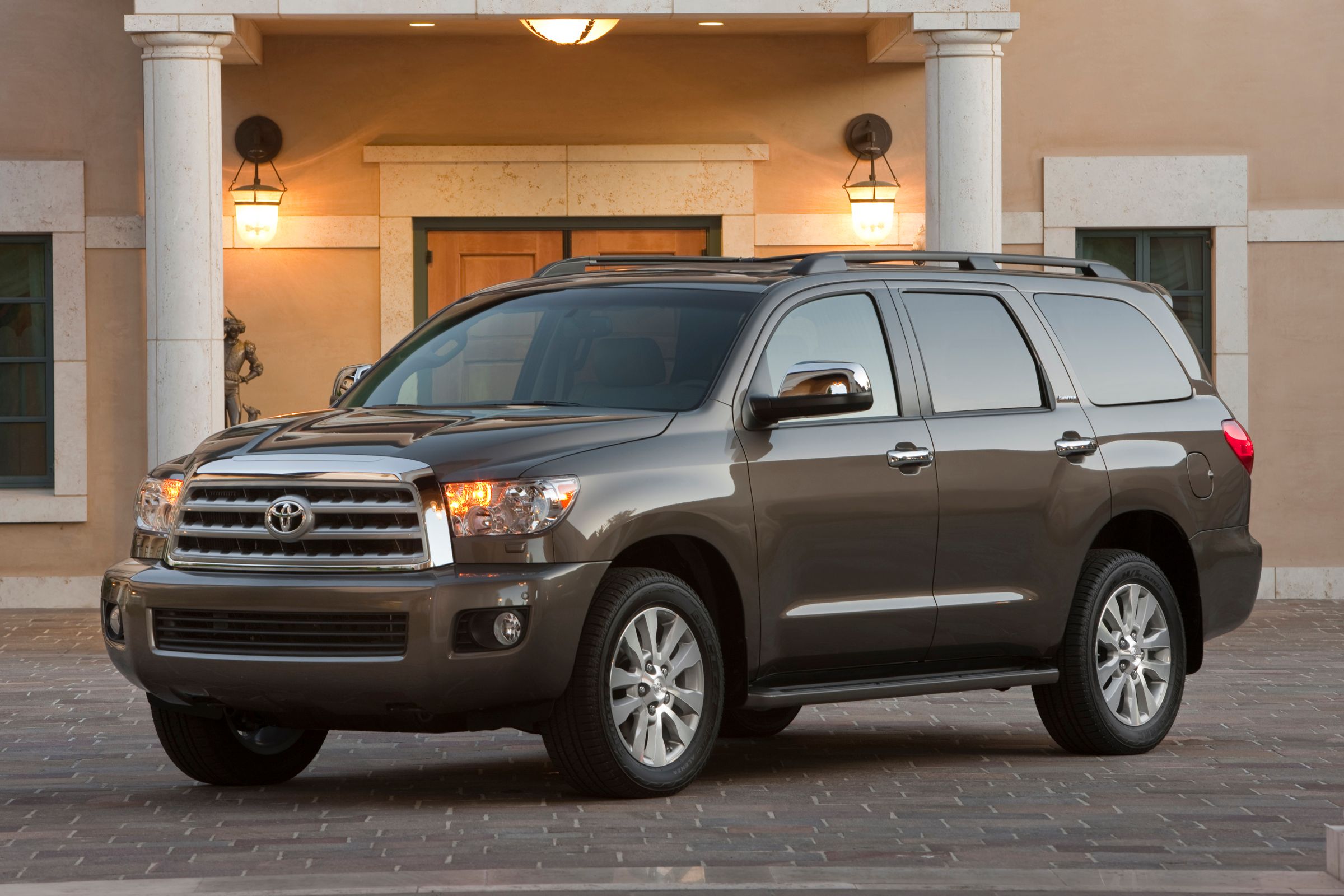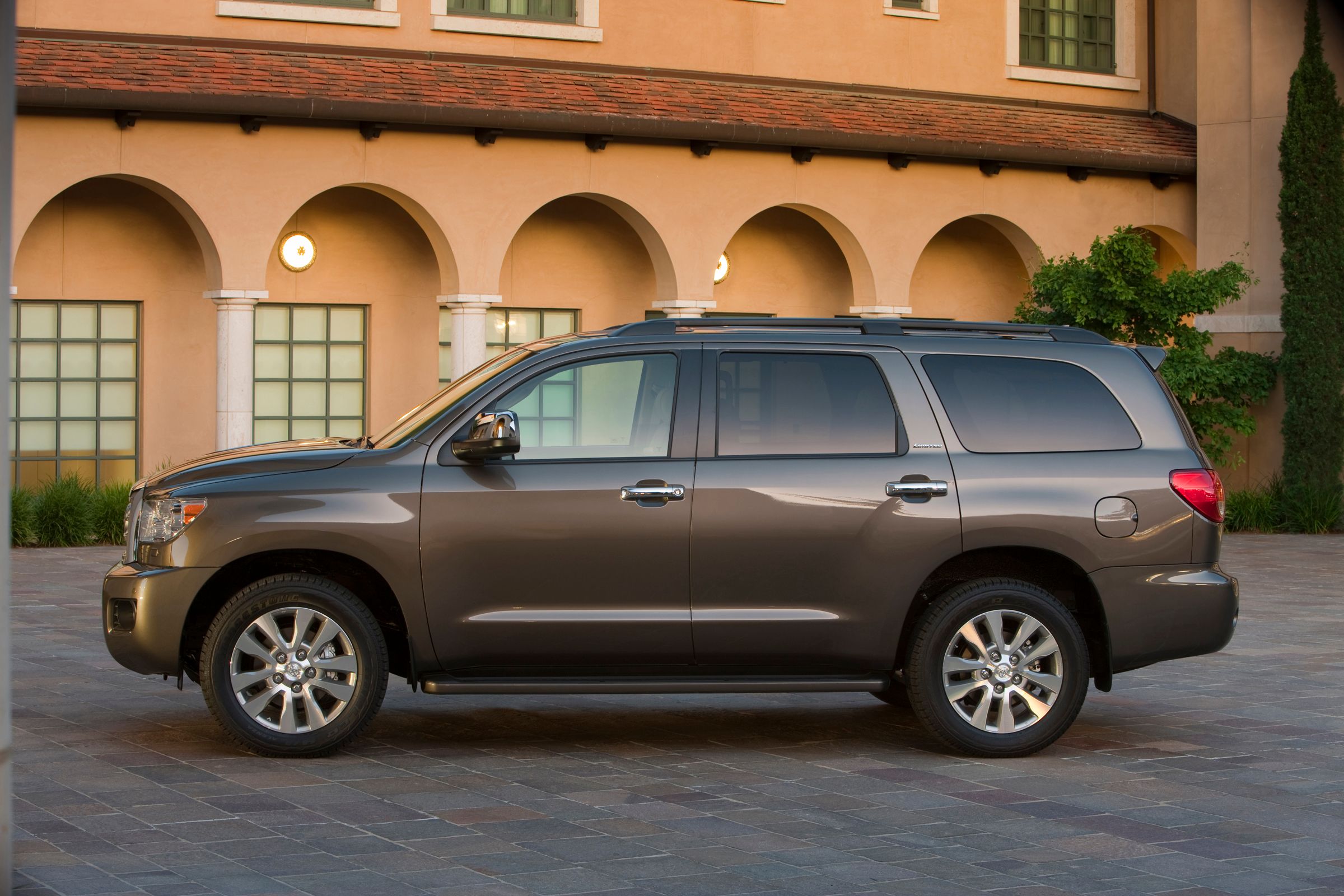When Toyota->ke88 released the full-sized Sequoia, buyers stood up and took notice as this known-for-compact-cars company decided it was breaking its own mold by taking on the bug American SUVs head on. Here we are 12 years into the Sequoia’s run and it has consistently received rave reviews from owners and experts alike.
The current rendition has been around since 2008 and it is starting to get a little long in the tooth. Unfortunately, we don’t have any evidence that Toyota is planning to completely overhaul its full-size SUV any time soon. We do, however, have some new details regarding the 2013 model year, which may be a sign that a revamping of the body is coming in the next few years.
The vast majority of the upgrades to the 2013 Sequoia->ke1836 involved technology and comfort, but there are some minor mechanical upgrades that call for a little bit of attention. So, can the aging Sequoia keep itself near the top of the heap in the full-size SUV realm?
Click past the jump to read all about the 2013 Sequoia and find out if it can stay afloat.
2013 Toyota Sequoia
- Make: Array
- Model: 2013 Toyota Sequoia
- Engine/Motor: V8
- Horsepower: 381 @ 5600
- Torque: 401 @ 3600
- Transmission: 6-Speed Automatic
- [do not use] Vehicle Model: Array
Exterior
As we said before, the exterior of the Sequoia will remain relatively untouched, aesthetically at least. It will boast the same aerodynamic-friendly mirrors, wipers, A-pillars, and roof rack that last year’s model did. The undercarriage will also boast the same styling to help reduce drag. This gives the Sequoia a rather impressive 0.36 drag coefficient – better than many smaller crossovers.
Overall, the exterior of the Sequoia really shows that Toyota is dedicated to keeping the SUV what it has historically been – a truck with the comfort of a car. It sits nice and high, giving you a full view of the road ahead. Though it boasts great aerodynamics for such a large vehicle, its overall appearance is very tough. Its flat face, long body and steep-dropping hatch are all keys taken from SUVs of yesteryear.
A new addition for 2013 is a set of standard headlamp washers, to help keep your vision as clear as possible. The Limited package gets you a few extra details on the outside, like power-retracting mirrors, glare resistant mirrors and mirror-mounted turn-signal lamps. When you upgrade to the Platinum package you will get all of the Limited features plus mirror-mounted puddle lamps, mirror position memory and reverse-linked tilt functions.
For those that opt for either of the higher trim levels – Limited or Platinum – the 2013 Sequoia comes with a set of front and rear parking sensors that let you know when you get this large SUV a little too close to an object or car. With this beast measuring in at 205.1 inches long x 79.9 inches wide x 77 inches tall, you’re likely going to want all of the parking assistance you can get.
Exterior Specifications:
|
Length |
205.1 inches |
|
Width |
79.9 inches |
|
Height |
77 inches |
|
Curb Weight |
5,670 lbs |
Interior
The majority of the Sequoia’s interior, much like the exterior, is a carryover from last year. It will continue to seat a whopping eight adults and provide plenty of space for each. You can opt for second-row captain’s chairs, which will decrease the Sequoia’s seating to seven passengers. It will boast a total of three rows, with the last two rows folding – the second row is a 40:20:20 split and the third row is a 60:40 split.
For families, the number of cupholders in their car is still a key buying feature and the Sequoia delivers 16 “extra-large” cupholder on the SR5 and Limited models, and the Platinum model tosses in 18 cupholders.
Being an SUV, we also have to take a look at the interior utility of the Sequoia. This massive SUV can carry cargo with a length of up to 11 feet, with both rear rows folded flat. The total cargo capacity with the seats folded is an 120.1 cubic-feet, giving you plenty of space to load it up.
The rear hatch is a two-piece design that allows you to open just the rear glass, if needed. The rear area also boasts a grouping of hooks for hanging grocery bags, so you no longer get cans of little Jimmy’s tomato soup rolling around on the floor.
As for colors, the interior is very limited. You only get two color options for all three trim levels – SR5, Limited and Platinum – and those are Graphite and Sand Beige. On the SR5 trim level you can opt for all black interior and at the Platinum level you can opt for Red Rock interior.
There is one huge addition to the interior that is all-new for the 2013 model year. This new addition is an optional Blu-Ray player in the rear seating area on the Limited trim level. This Blu-Ray entertainment system becomes a standard feature when you upgrade to the Platinum trim level.
From a styling standpoint, the Sequoia’s interior is simple and refined. There is not too much clutter and everything looks to be in place. The only complaint that we can come up with it that the center stack looks to be a pretty far stretch for the driver to reach for. We think it would have been better had Toyota moved the center vent to the opposite side of the radio and HVAC controls, and shifted those latter two groups close to the driver.
Interior Specifications:
|
Seating |
8 maximum / 7 optional |
|
Front Headroom |
34.8 inches |
|
Front Legroom |
42.5 inches |
|
Rear Headroom |
34.9 inches |
|
Rear Legroom |
40.9 inches |
|
Cargo Depth |
11 feet |
|
Cargo Capacity |
120.1 cubic-feet |
Engine and Transmission
Okay, first things first; Toyota has officially eliminated the underwhelming 310-horsepower, 327-pound-feet 4.6-liter V-8 engine. Now standard on all trim levels is the iForce 5.7-liter V-8 engine, which cranks out 581 horsepower at 5,600 rpm and 401 pound-feet of torque at 3,600 rpm. You have access to over 90 percent of the maximum torque from as low as 2,000 rpm, giving you diesel-lie takeoff when towing.
With this engine comes dual-independent VVT-i, which helps fine-tune the valve timing for optimal performance and fuel economy. Acoustic Control Induction System (ACIS) actually varies the length of the intake tract, which helps optimize the torque curve, giving you a flatter curve and better towing capacity across the rpm spectrum.
The engine drives the wheels via a 6-speed automatic transmission that boasts a flexible torque converter lock-up control. This allows the vehicle to have three different overdrive gears – one in fourth, fifth and sixth gear. The Sequoia will come standard in rear-wheel drive, but has the option for multi-Mode four-wheel drive. This system utilizes a pair of transfer cases with a TORSEN limited-slip center diff. This system allows you to run an open differential or lock it in at the push of a button, when needed.
Depending on how you equip the 2013 Sequoia, it can tow up to 7,400 lbs, which is a carryover from last year. We are uncertain exactly what it tows from the base level, but we would assume it will be slightly greater than the 6,900-pound base capacity that it had last year. The standard tow package helps keep your load in check, thanks to its Traction Trailer Sway Control and Vehicle Stability Control. This helps take some of the swaying created by towing a trailer behind you away. A tow/haul option on the 2013 Sequoia will allow you to change the shift points of the transmission to optimize its low-end torque. Lastly, the tow hitch is a one-piece unit with the frame, as opposed to a bolt-on unit.
There are no official mpg figures for the 2013 Sequoia yet, but we assume it will carry over the 13 mpg city, 18 mpg highway and 15 mpg combined with rear-wheel drive, and 13 mpg city, 17 mpg highway and 14 mpg combined with four-wheel drive. Though it’s a hulking SUV, we do expect some decent performance from it, as last year’s model was tested at 6.7 seconds to 60 mph.
Suspension
The 2013 Sequoia will boast a 4-wheel independent suspension system, which incorporates upper and lower control arms and coil springs, so nothing too special there. On the Platinum model, however, you will get Toyota’s Adaptive Variable Suspension (AVS}. AVS allows the driver to select between three suspension settings: “Comfort,” “Normal” and “Sport.” Additionally on the Platinum level you will get a Electronically Modulates Air Suspension system, which essentially levels on the suspension when towing or hauling.
Standard Features
As a full-size SUV, Toyota neds to keep a delicate balance between high-end features and aggressive base price. Toyota actually touts the base SR5 trim as the “best-equipped vehicle in its class.” Let’s have a look at what standard features each trim level offers up.
SR5:
|
Eight-passenger seating |
|
Eight-way power driver’s seat |
|
Tilt/telescoping steering wheel |
|
Leather-trimmed steering wheel with audio and climate controls |
|
Engine immobilizer with alarm |
|
Direct tire pressure monitoring system |
|
Automatic tri-zone air conditioning |
|
Power windows, locks and sliding back window |
|
AM/FM CD player with MP3/WMA playback capability, eight speakers, SiriusXM Satellite Radio, auxiliary audio jack, USB port with iPod connectivity, hands-free phone capability and music streaming via Bluetooth wireless technology |
|
Illuminated entry system |
|
Keyless entry |
|
Rear wiper and defogger |
|
Cruise control |
|
Mud guards |
|
Towing package |
|
Fog lamps |
|
Running boards |
|
Power tilt/slide moonroof |
|
Roof rack |
|
Rear spoiler |
Limited:
|
Basic SR5 features, plus: |
|
Front and rear parking sonar |
|
Power rear liftgate with a sliding window |
|
Power folding and reclining 60:40 split third-row seat |
|
20-inch alloy wheels |
|
Power tilt/slide moonroof |
|
Heated front leather-trimmed seats |
|
Second- and third-row retractable sunshades |
|
Steering wheel-mounted air conditioning controls |
|
Bluetooth®-capable phones and other functions |
|
10-way adjustable power driver’s seat |
|
Leather-trimmed steering wheel and gear shift knob |
|
Optitron gauges and a multi-information display |
|
Auto-dimming electrochromic rear-view mirror w/ integrated compass and a map lamp, plus a 3.3-inch monitor in the rear-view mirror for the backup camera |
|
JBL Synthesis® AM/FM 6-disc CD changer with MP3/WMA playback capability, 14 speakers including subwoofer, SiriusXM Satellite Radio, auxiliary audio jack, USB port with iPod connectivity, hands-free phone capability and music streaming via Bluetooth wireless technology |
Platinum:
|
Basic Limited features, plus: |
|
Dynamic Laser Cruise Control |
|
Rear seat Blue-Ray entertainment system w/ 9-inch LCD screen and separate rear seat audio system w/ dual wireless headphones |
|
12-way adjustable power driver’s seat |
|
Simulated wood-trim |
|
20-inch diamond cut-finish alloy wheels |
|
Rear load-leveling air suspension |
|
Power seat memory package |
|
Second-row heated seats |
|
Simulated wood-trimmed steering wheel |
|
Voice-activated touch-screen DVD navigation system with integrated backup camera display |
|
JBL Synthesis AM/FM 4-disc CD changer with MP3/WMA playback capability, 14 speakers including subwoofer, SiriusXM Satellite Radio with NavTraffic, auxiliary audio jack, 2 USB ports with iPod connectivity |
|
Hands-free phone capability and music streaming via Bluetooth |
Optional Equipment
In case the standard features aren’t enough for you, Toyota has lined up a nice selection of optional equipment for each trim level. Let’s have a look at what you can add on for a little extra scratch.
In the SR5 trim level, you can add on the Sport Appearance package, which includes:
- 7-passenger seating
- 20-inch chrome-alloy rims
- Color-keyed grille
- Black seat fabric
- Exterior colors: Black, White, and Silver
The SR5 also can be had with the Premium Package, which comes with:
- Leather-trimmed and heated 10-way power-adjustable driver's seat
- Four-way power-adjustable front passenger seat
- Leather-trimmed 40/20/40 split sliding
- Reclining, fold-flat second-row seat with one-touch access to the third-row seat
- Leather-trimmed 60/40 split, power reclining, fold-flat third-row seat
- Auto-dimming rearview mirror w/ backup camera monitor, compass, map lights, and HomeLink universal transceiver.
The already decked-out Limited trim level only has three pieces of optional equipment and they include:
- Rear Seat Entertainment System w/ Blu-Ray player, rear audio controls, and 115V outlet
- DVD navigation system with Entune and a backup camera, JBL® Synthesis AM/FM four-disc CD changer audio system with a 90-day trial subscription to SiriusXM Satellite Radio and NavTraffic
- 7-passenger seating w/ second-row captain’s chairs
You can also opt for the Entune multimedia system on the SR5 or Limited package, which integrates your smartphone with the Sequoia’s navigation, entertainment and information systems. This feature also uses apps, such as Bing, iHeartRadio, MovieTickets.com, OpenTable and Pandora. It also streams live traffic, weather, fuel prices, sports, and stocks.
Pricing
The pricing for the 2013 Toyota Sequoia has yet to be released, but we anticipate a small increase over last year’s base MSRP of $40,930, just to compensate for the larger engine and additional standard features. Look for it to come in somewhere around $42,500 and for the other trim levels to receive similar price bumps.
Competition
The Full-Size SUV realm is massive in both vehicle size and number, so the competition is nearly endless for the 2013 Sequoia.
We’ll start off with the GMC Yukon->ke266, which is about as close to the Sequoia as you can get from a U.S. brand. The 2013 Yukon comes standard with the aging and outdated 5.3-liter V-8 engine that pumps out only 320 ponies and 335 pound-feet of torque, giving the Toyota a leg up right from the start. The Tahoe uses a 6-speed shiftable automatic transmission and has your run-of-the-mill optional four-wheel-drive system. From 0 to 60, the Yukon is a dog, coming in at 9 seconds, but it crushes the Sequoia’s towing capacity, 8,500 pounds to 7,400 pounds when properly equipped. You also can squeeze a little extra fuel from the Yukon, as it gets 15 mpg city and 21 mpg highway in two-wheel drive.
As for design, we actually prefer the older design of the Yukon over the more rounded Sequoia. This adds a little extra wind noise, but in a hulking SUV you shouldn’t notice the difference. We prefer the layout of the Yukon’s interior, as everything is better placed than the Toyota, but its overall quality just looks cheap. In terms of pricing, the Yukon will save you a little money, as it bases out at $39,088 in its LS trim level.
To drop a crossover into this competition may seem a little unfair, but the Audi Q7 TDI definitely deserves a little consideration. Sure, it may use a paltry 3.0-liter diesel V-6 engine that only pushes out 225 horsepower, but its 406 pound-feet of torque and sturdy uni-body design actually make it a formidable foe. Even with its drastic horsepower deficiency, the Q7 TDI manages to come up only a little short in the towing department, hauling an acceptable 6,600 pounds. Where the Q7 fails is in its overall cargo capacity, which comes in only at 72.5 cubic-feet, which is mostly due to its stylish roofline.
The Q7 is definitely sexier than both the Sequoia and the Yukon on the inside and out, and its fuel economy is astronomically better – 19 mpg city and 28 mpg highway – but it has its big-time shortcomings. Besides what we already mentioned about cargo capacity, it also comes in at a premium price, starting out at $52,000. However, if you are willing to up your budget by $10K in order to get a vehicle that is better for the environment, gets higher mpg and will likely retain a higher resale value, but don’t mind losing a little oomph under the hood, the Q7 might be a good pick over the Sequoia.
Ultimately, the decision has to come down to what you need at this time. If you are looking to save a few bucks and you are an avid tower, the Yukon is likely a wise choice. If you are not as concerned about towing or price and more concerned about mpg and style, the Q7 is your best option. For something in the middle, we say the Sequoia is the perfect match.

